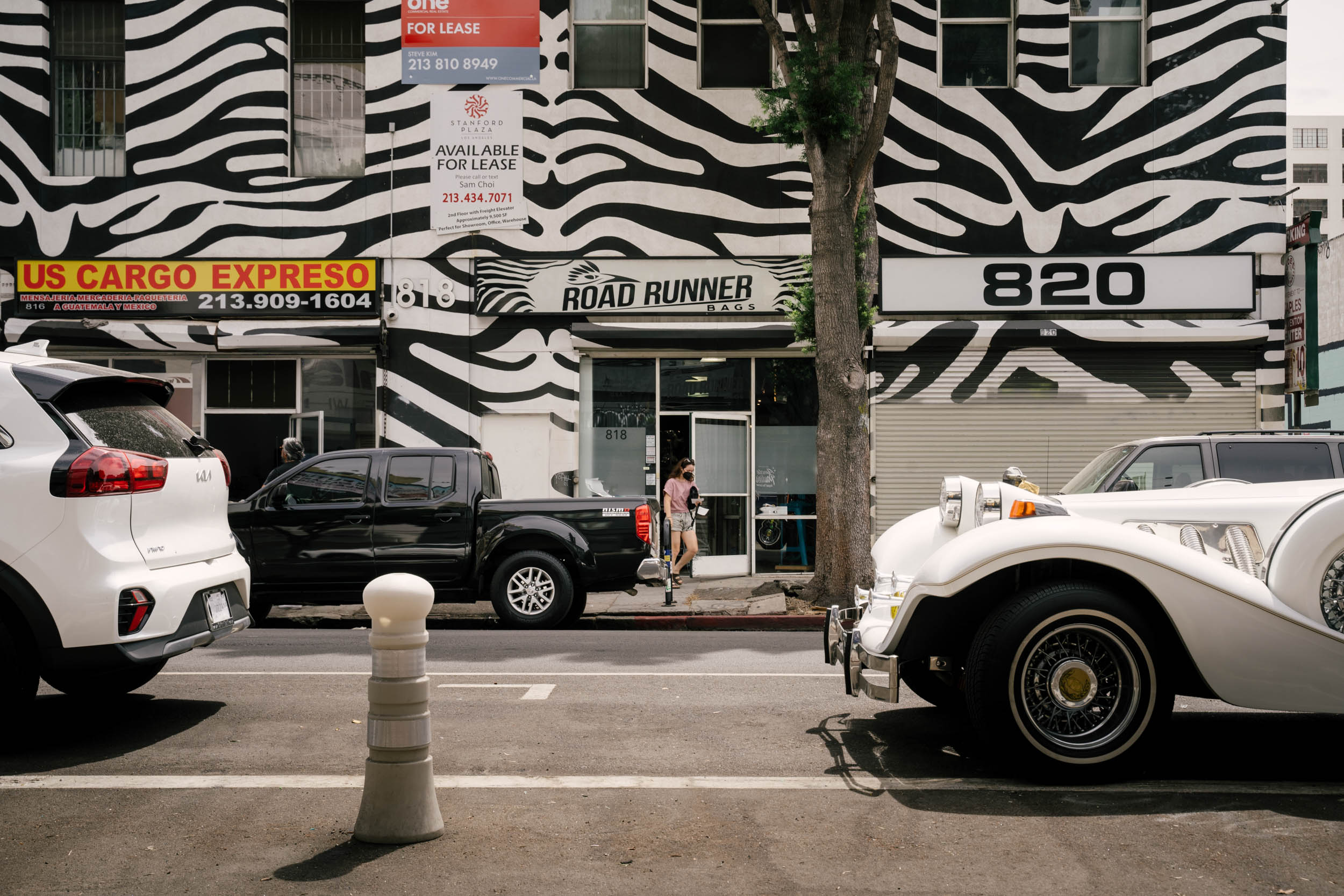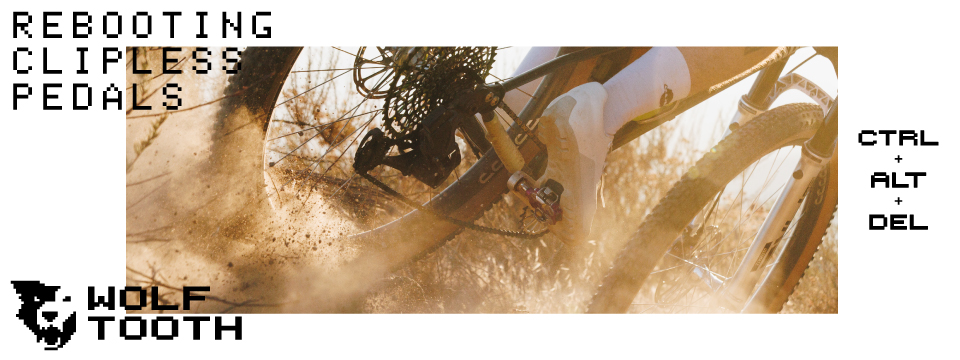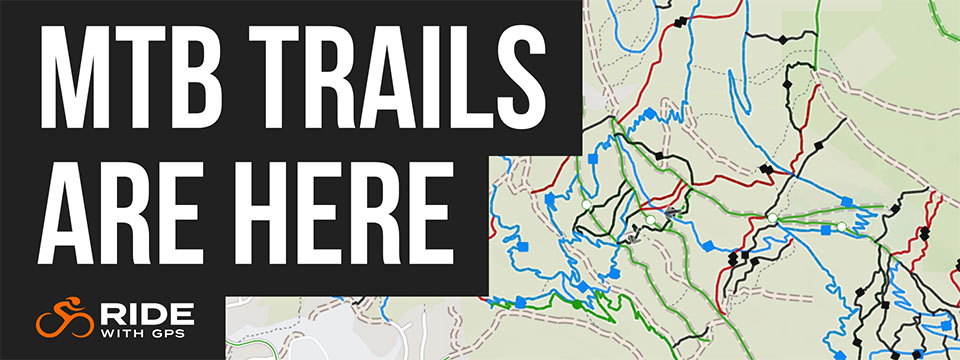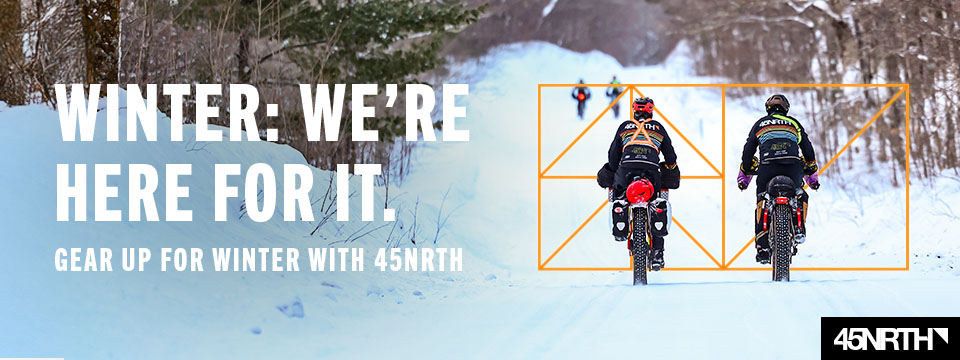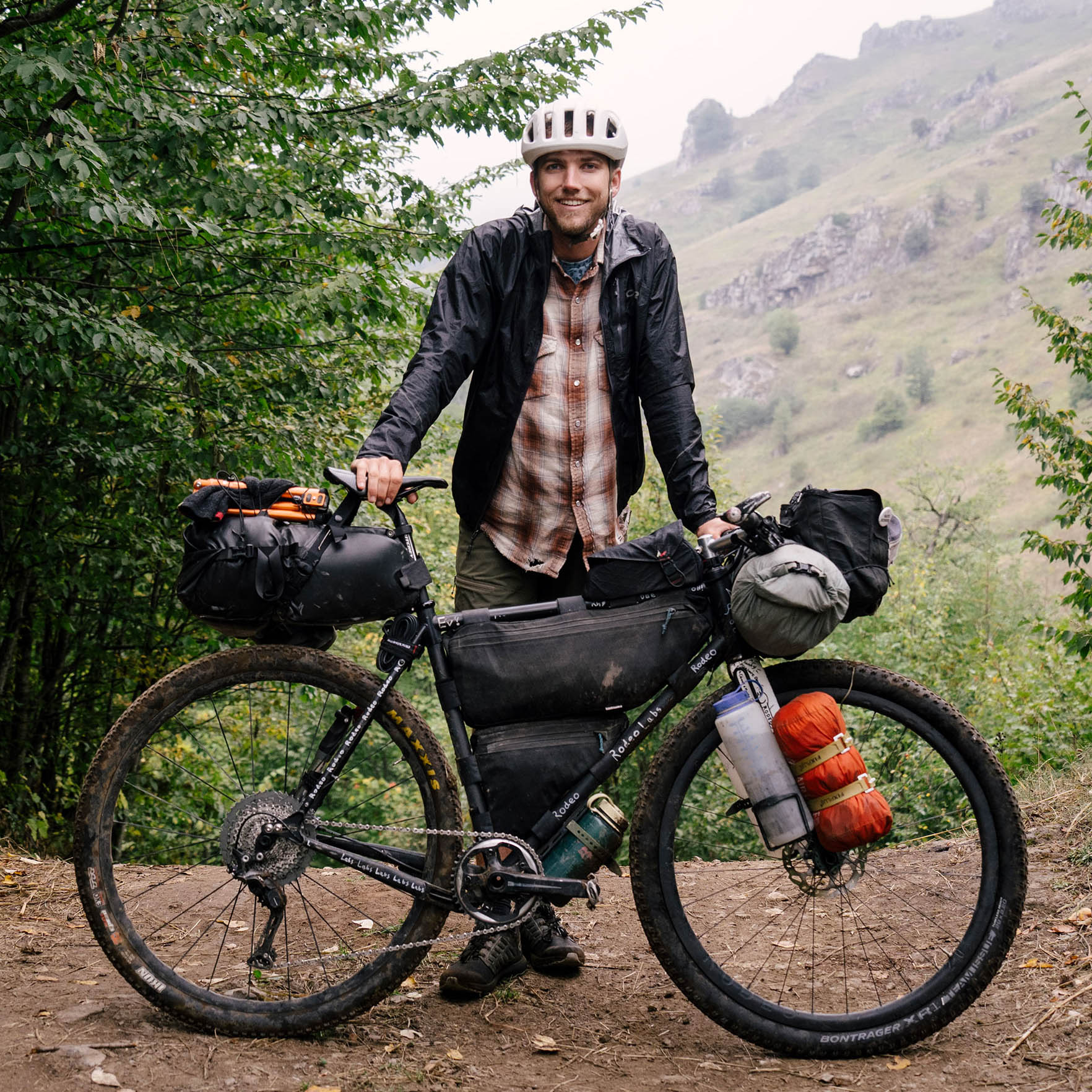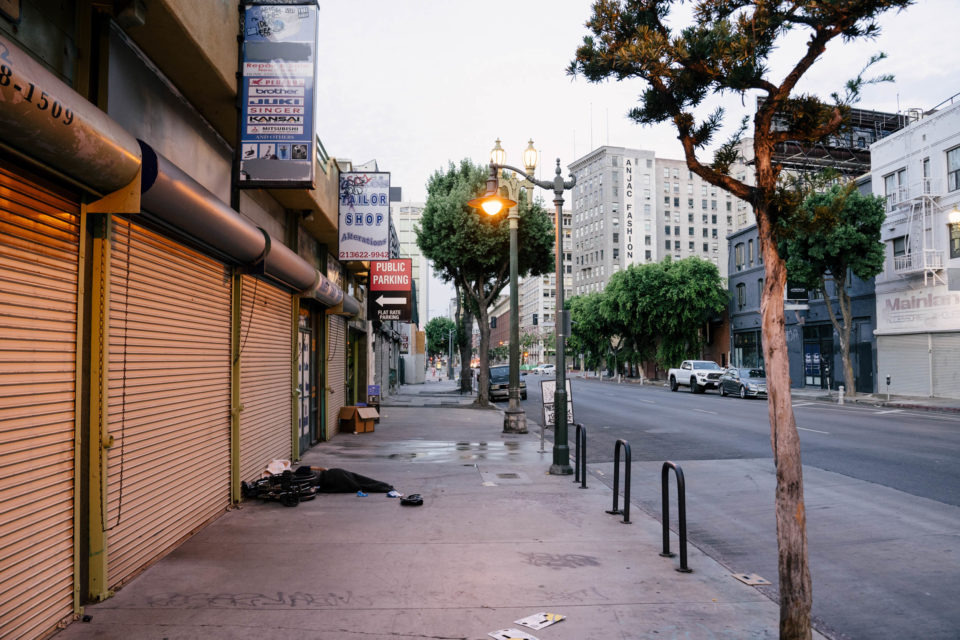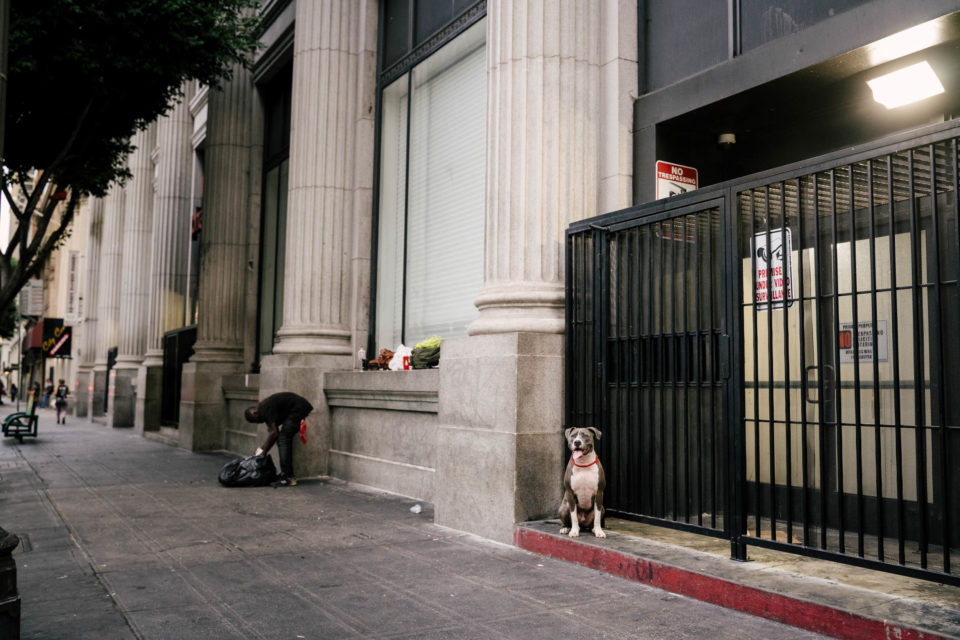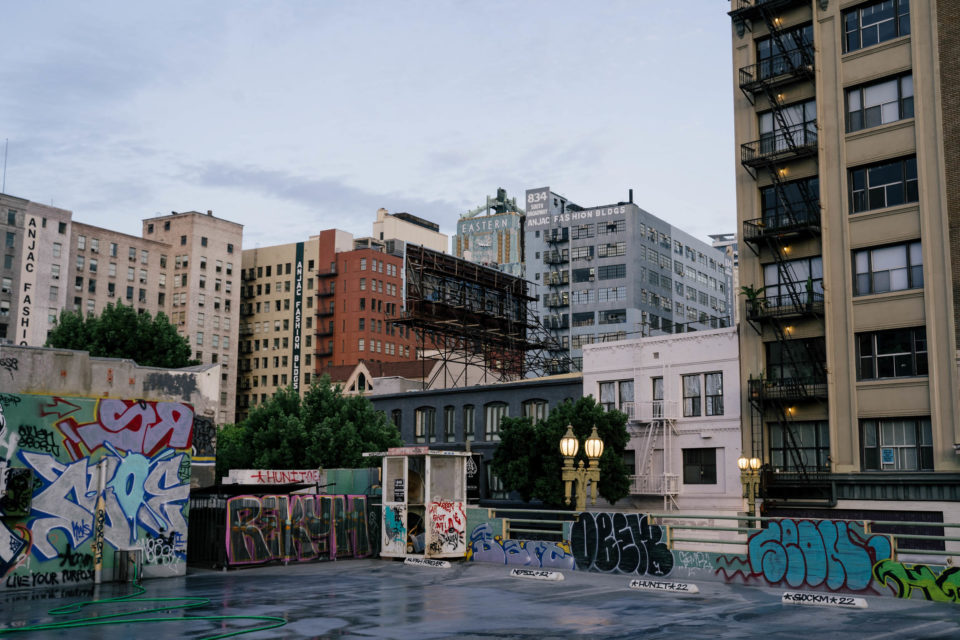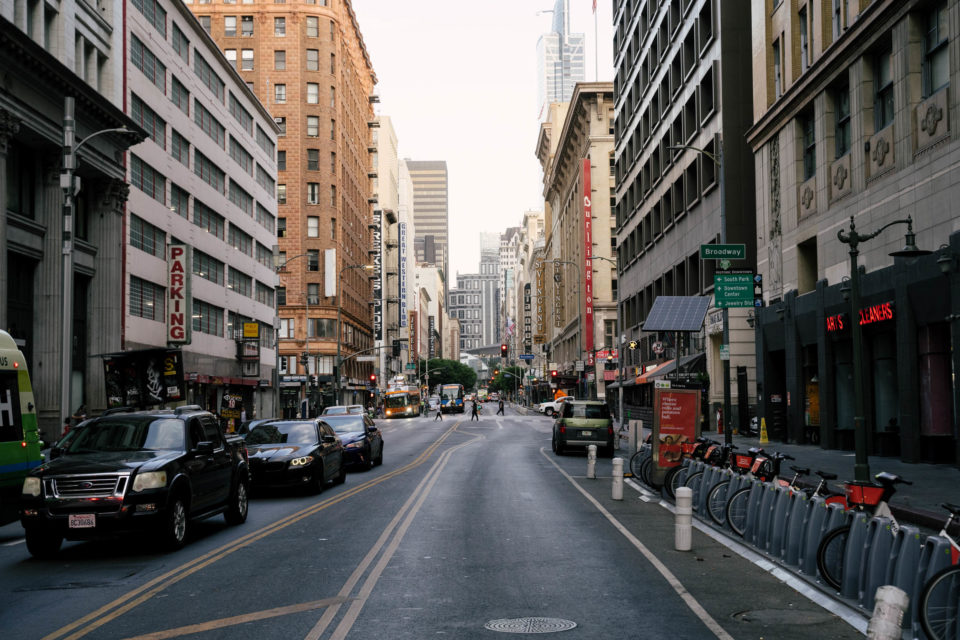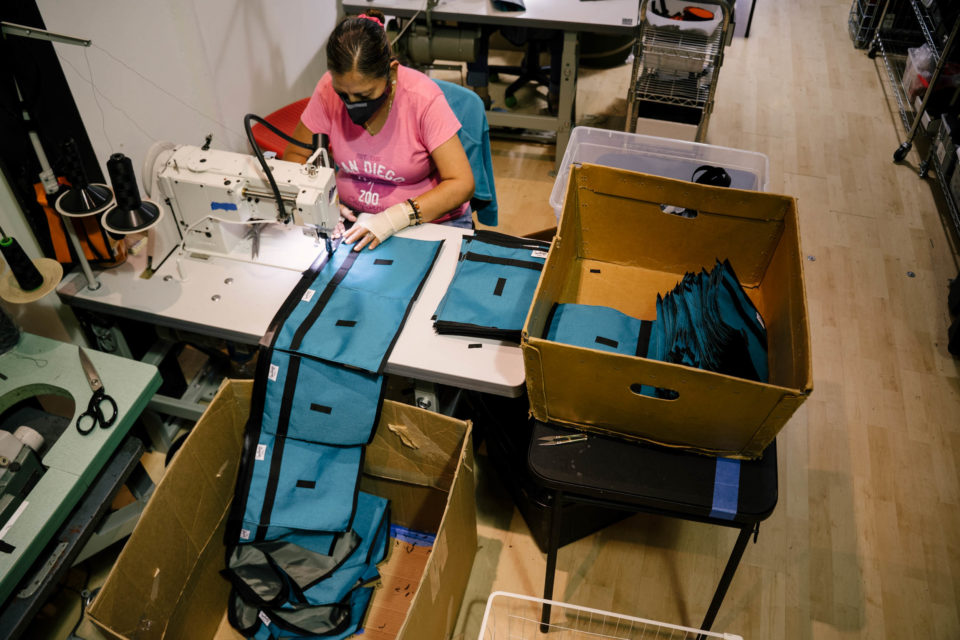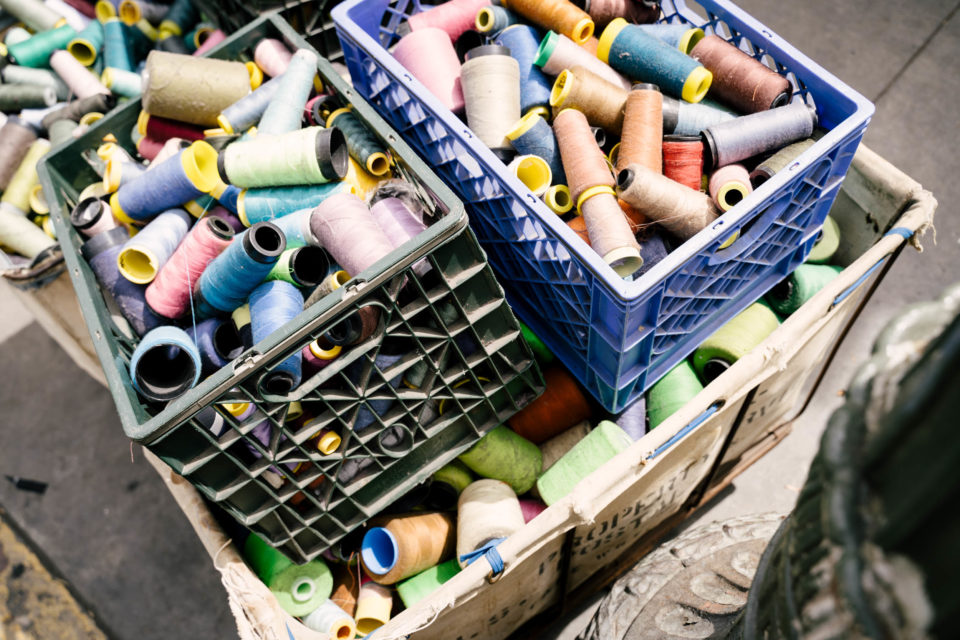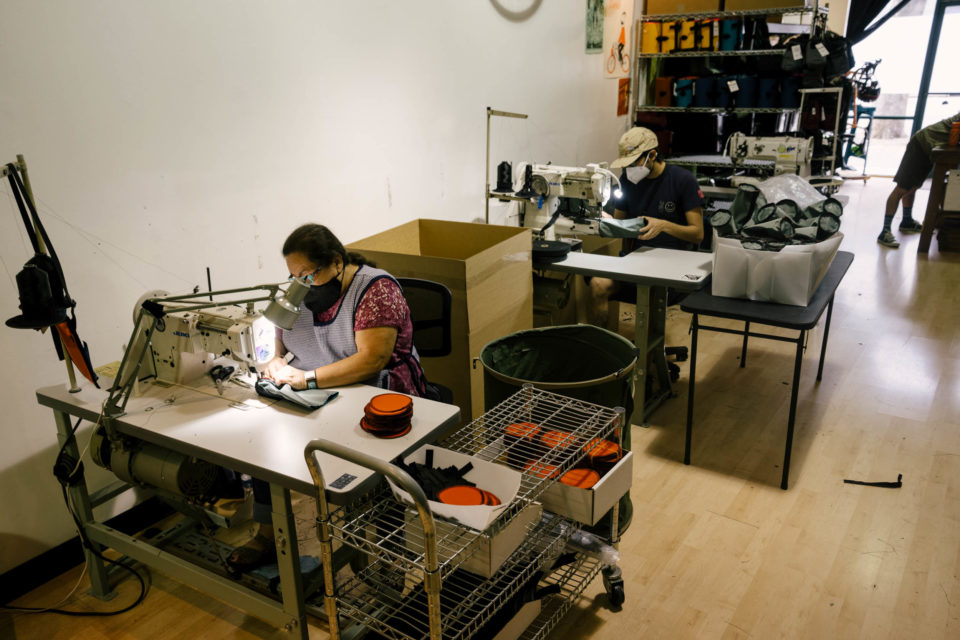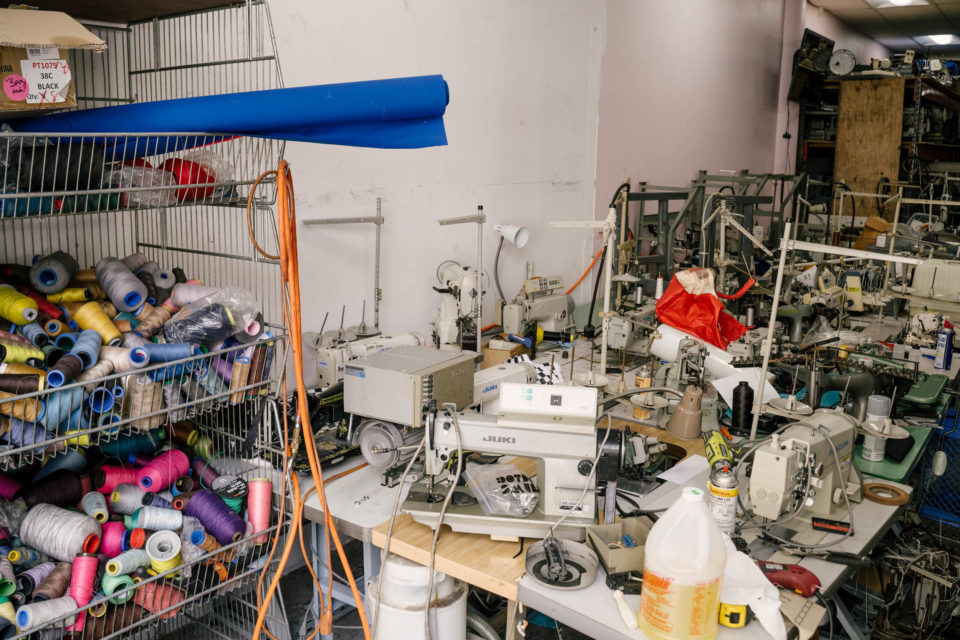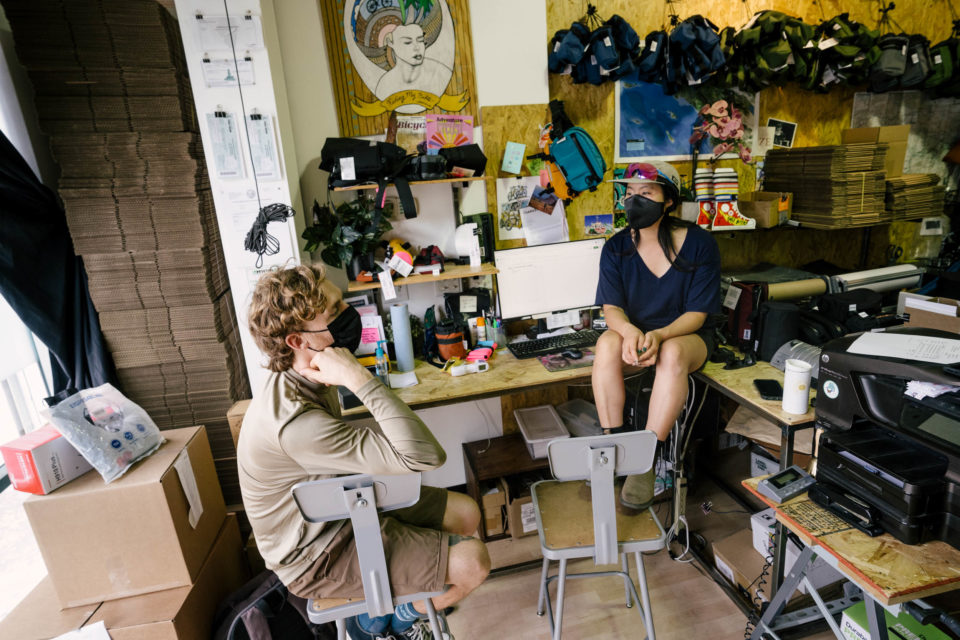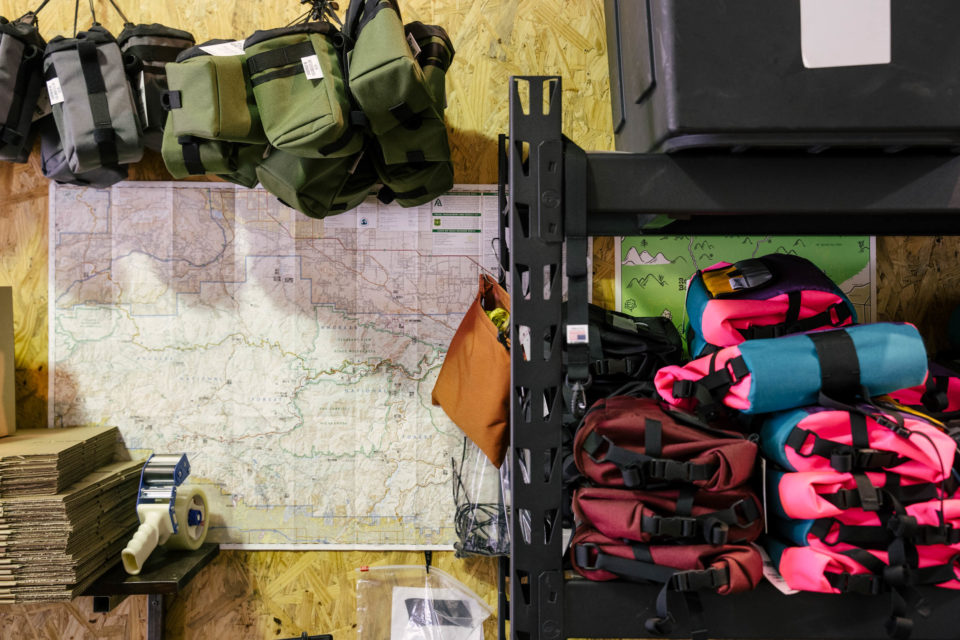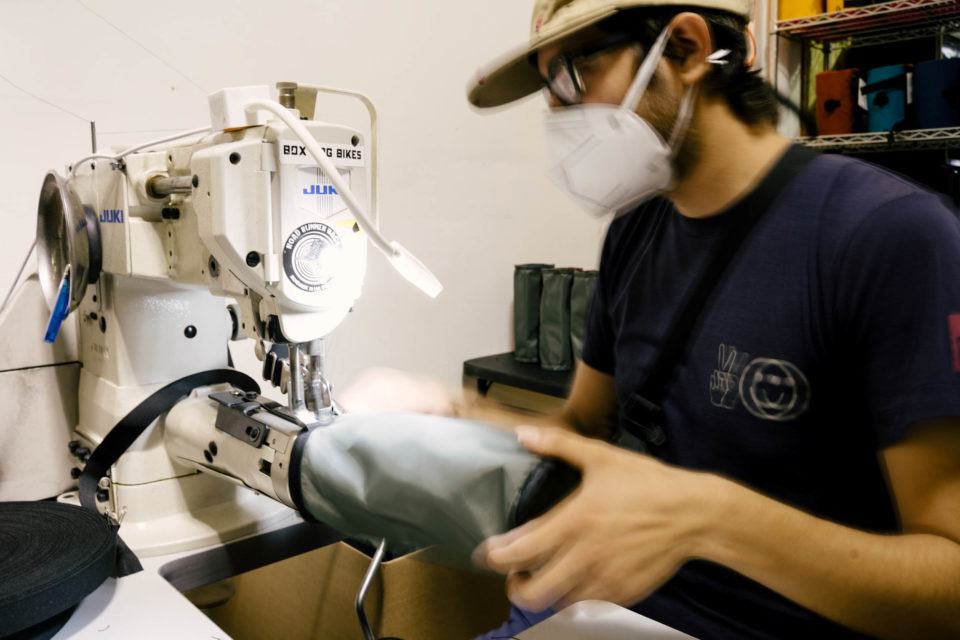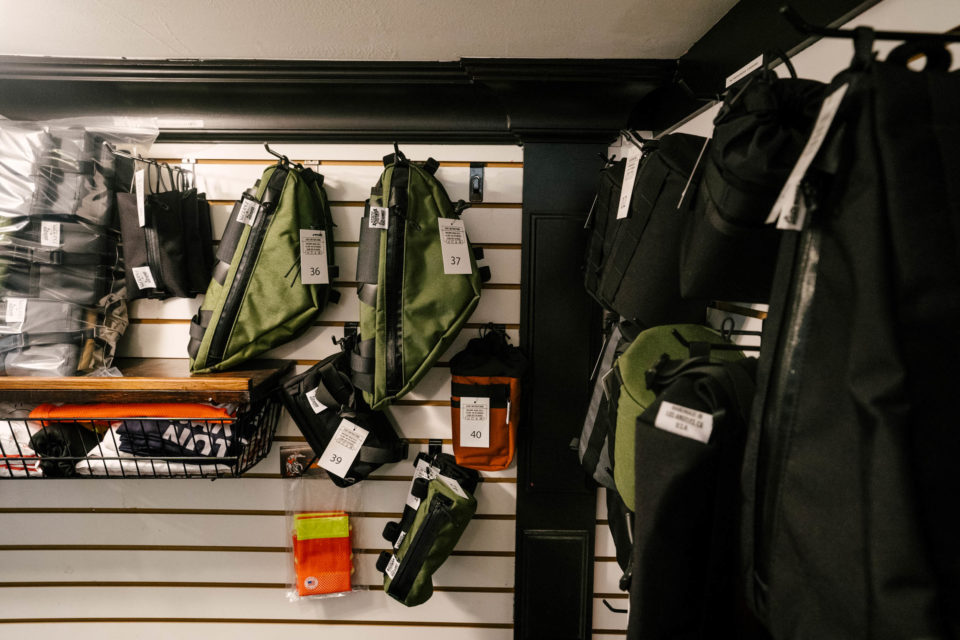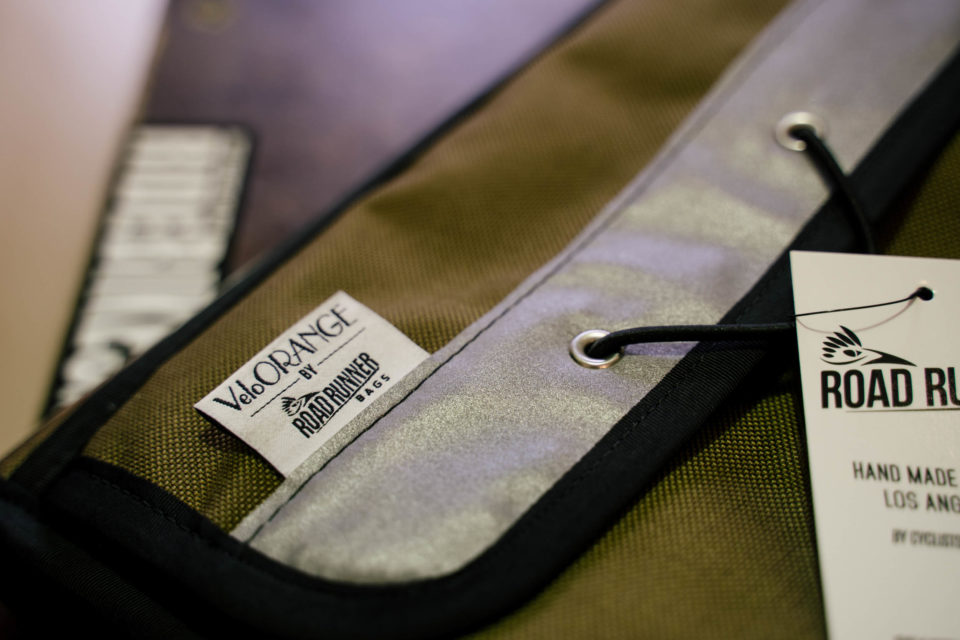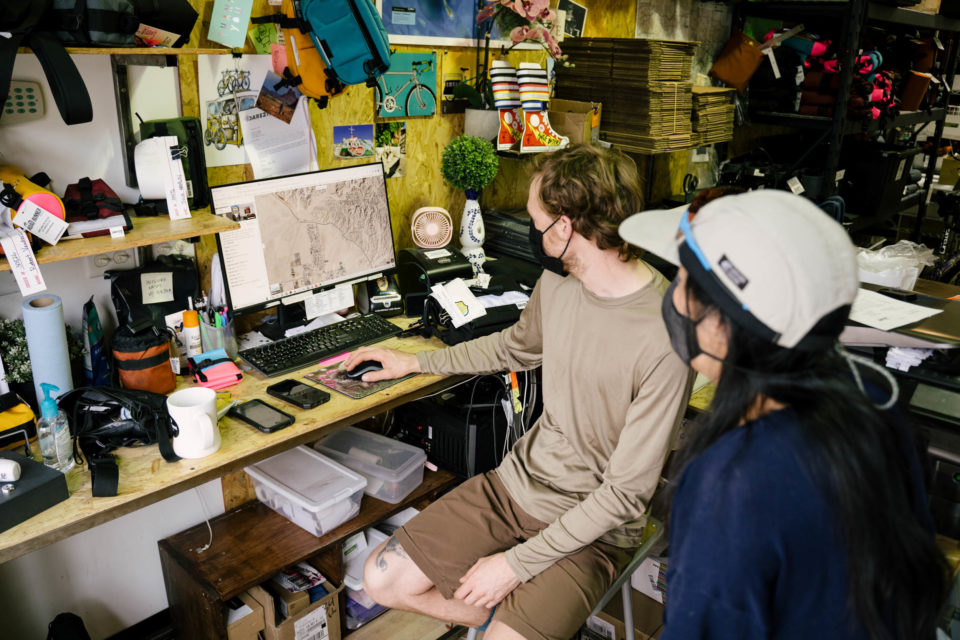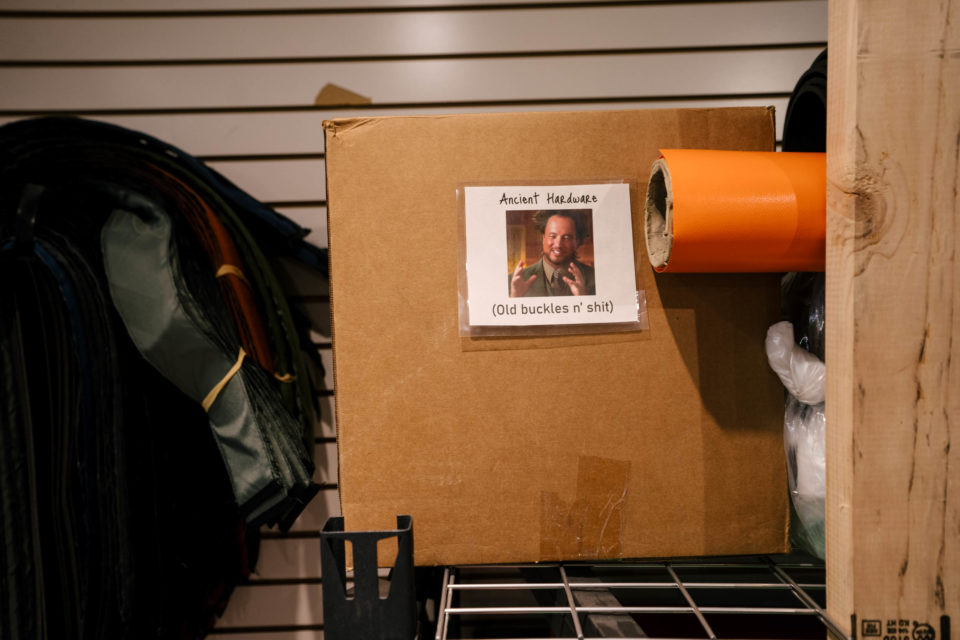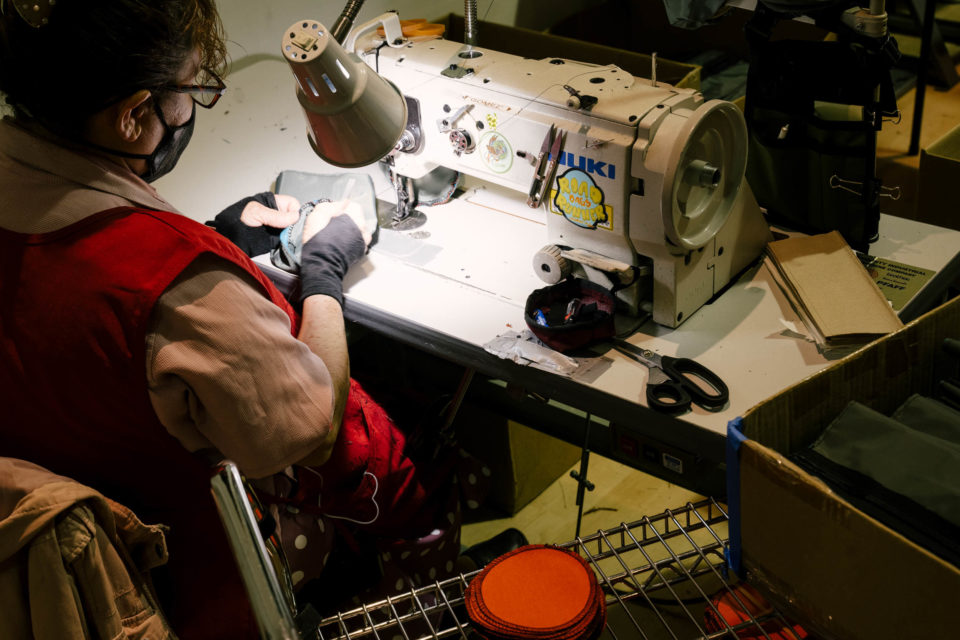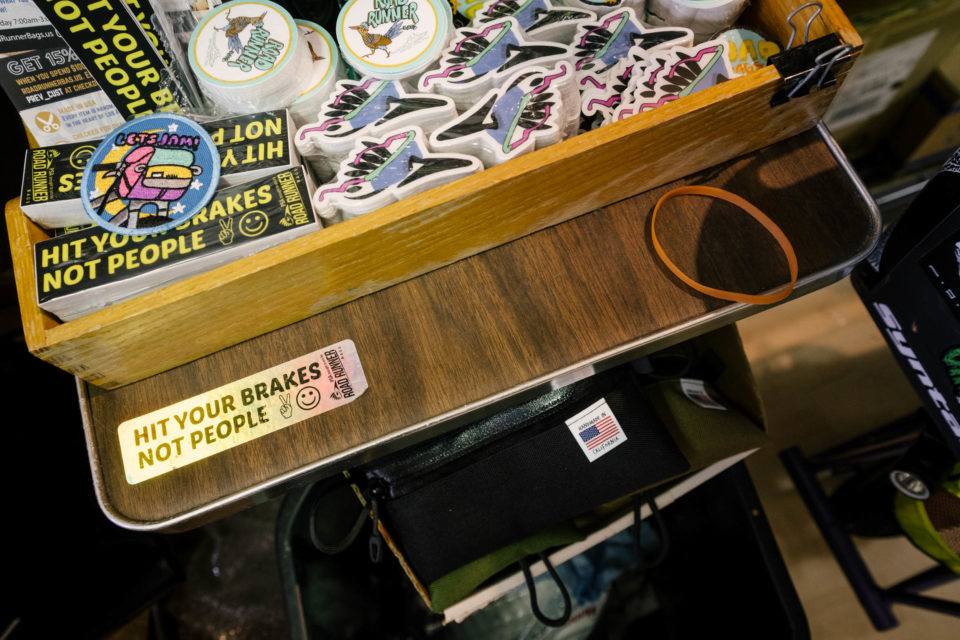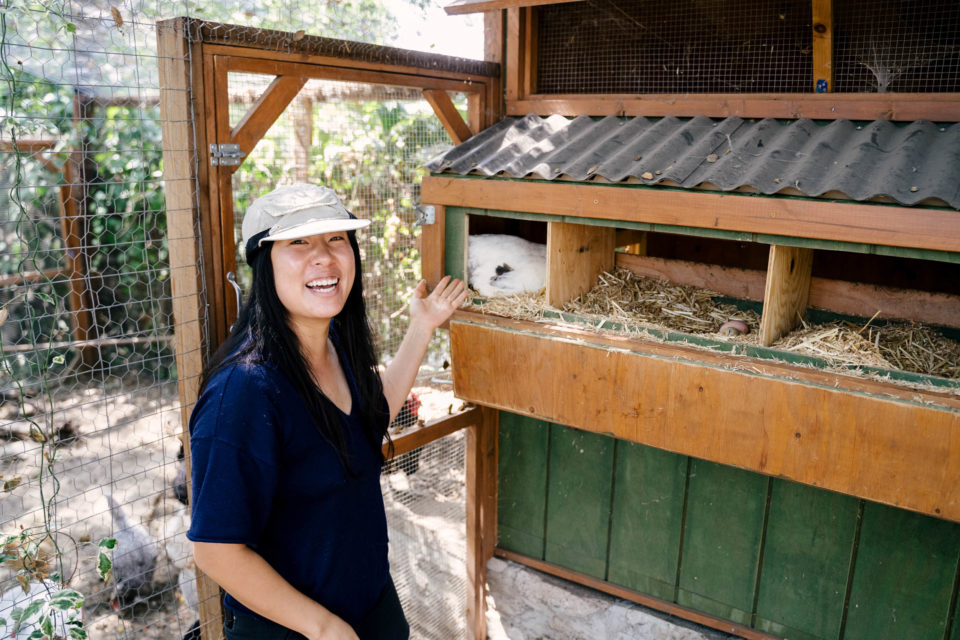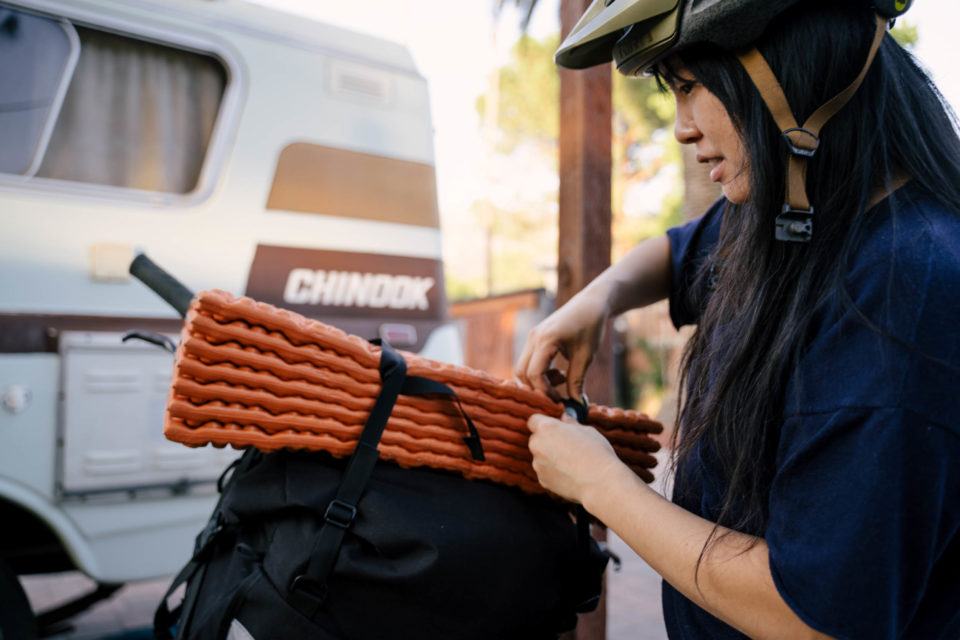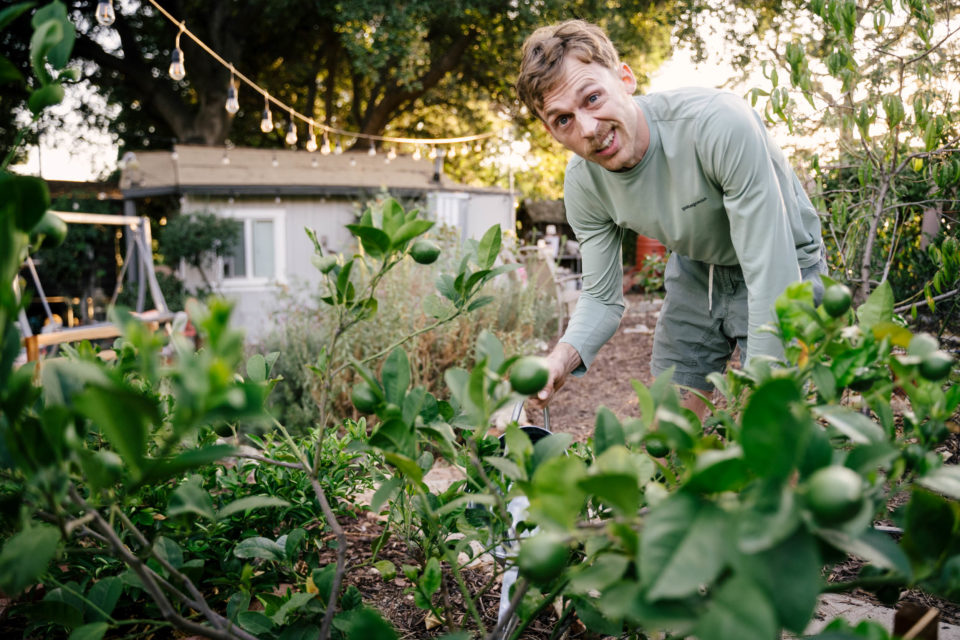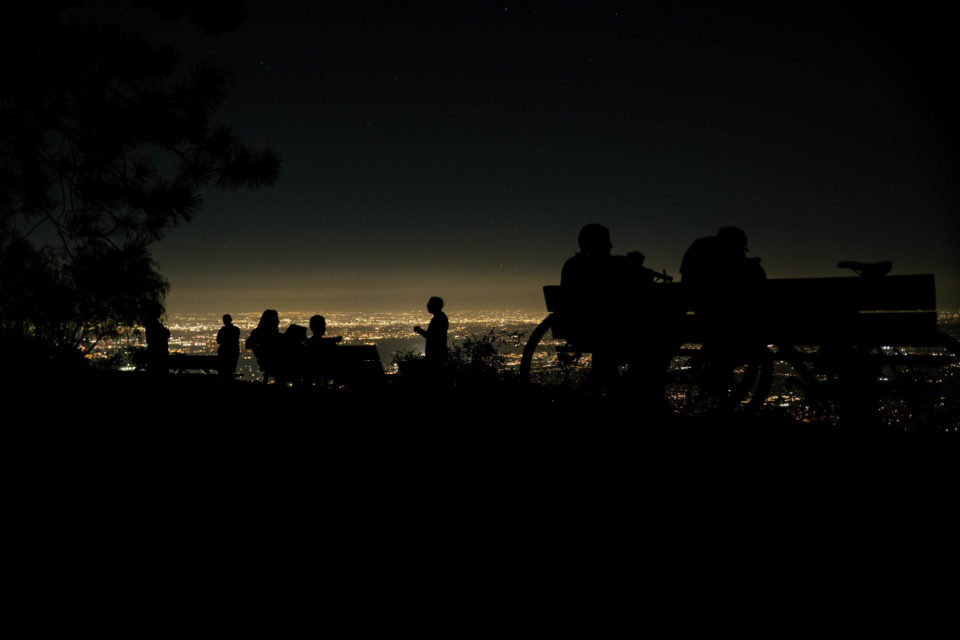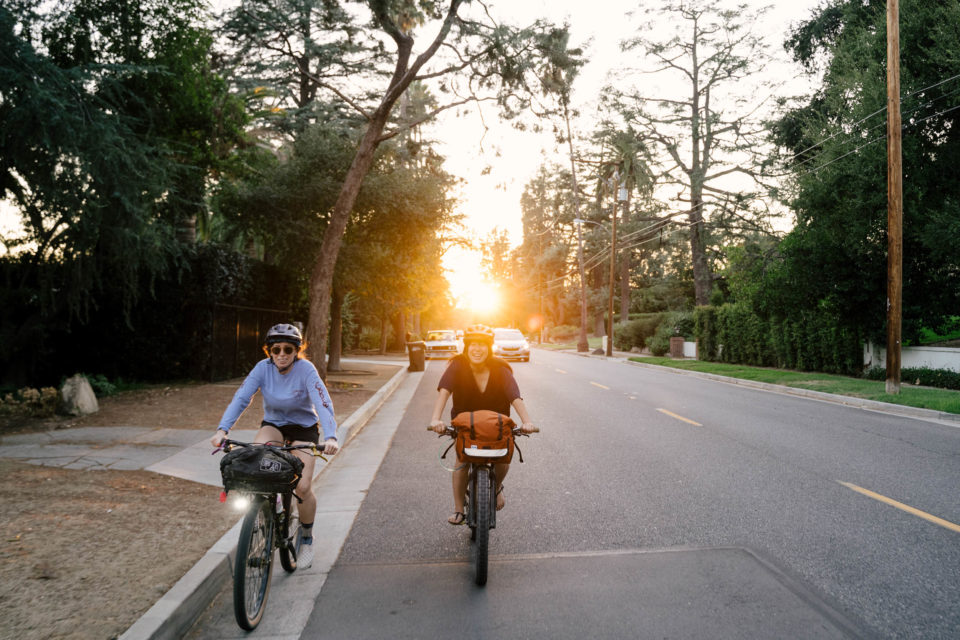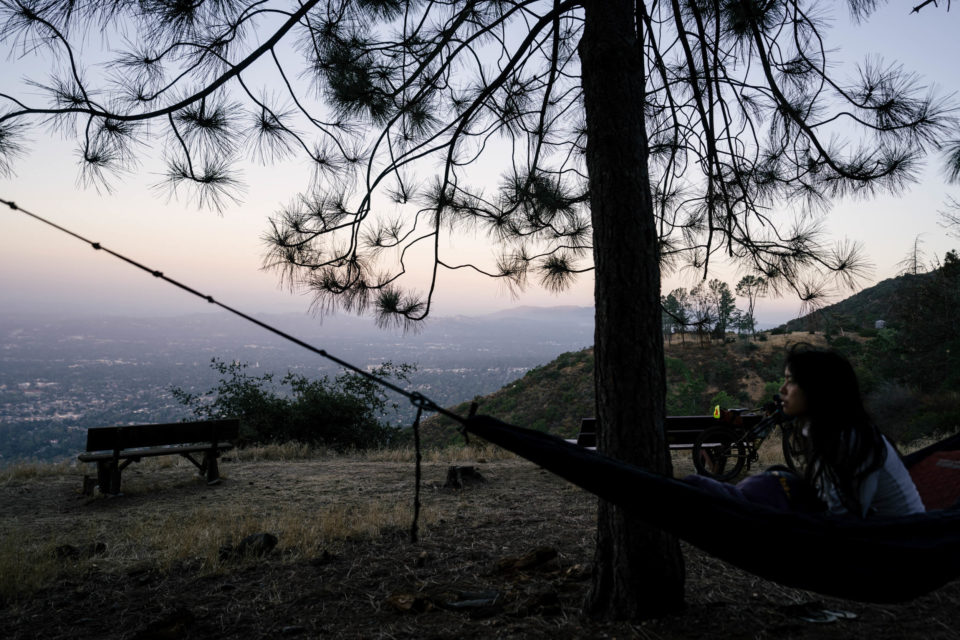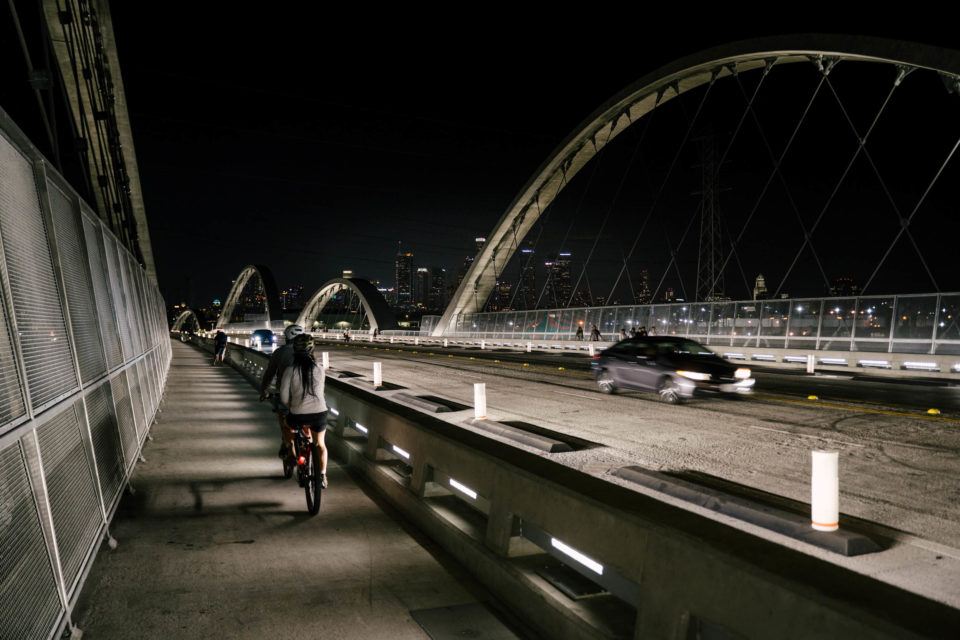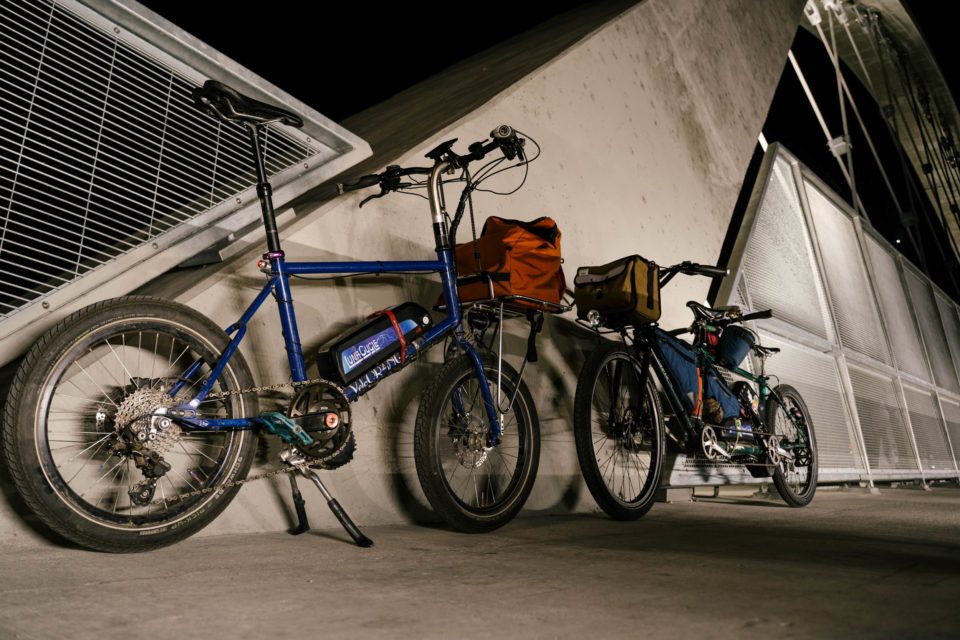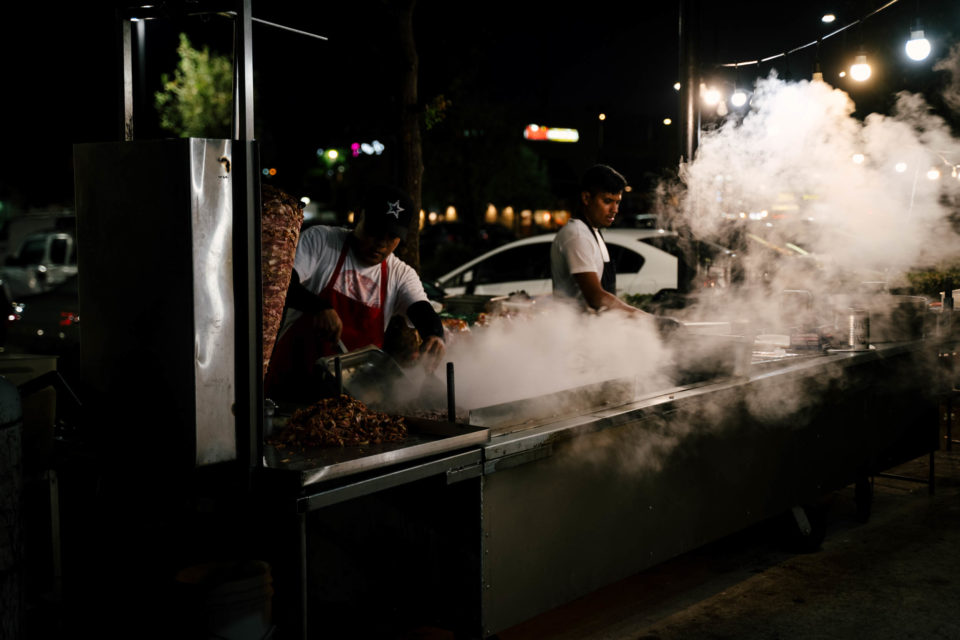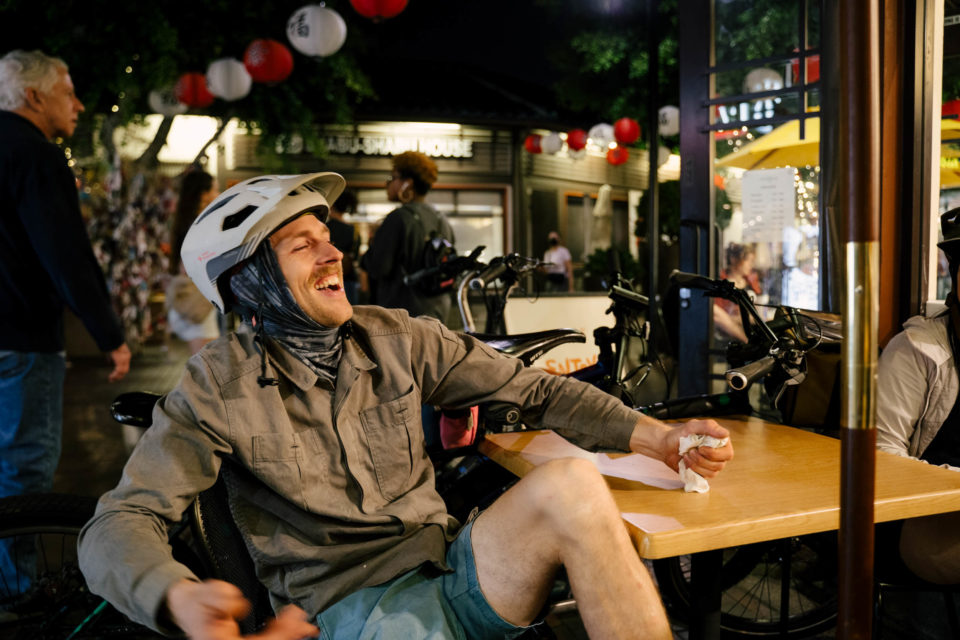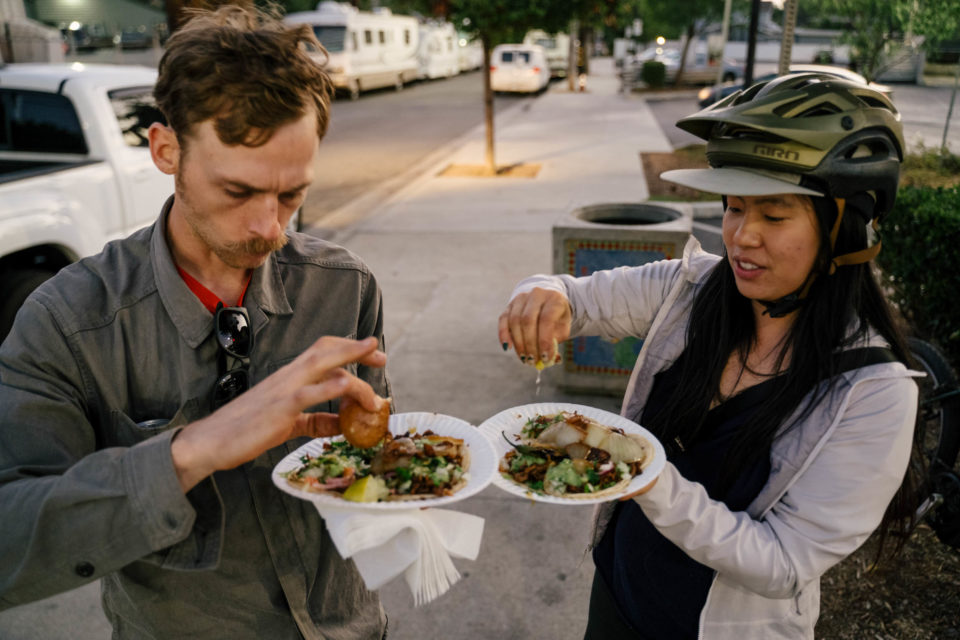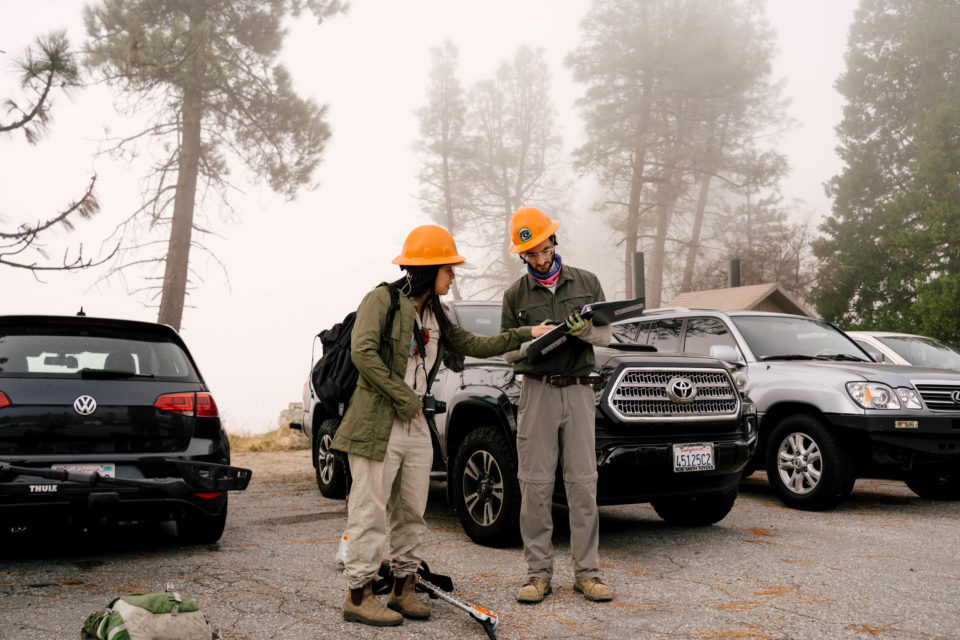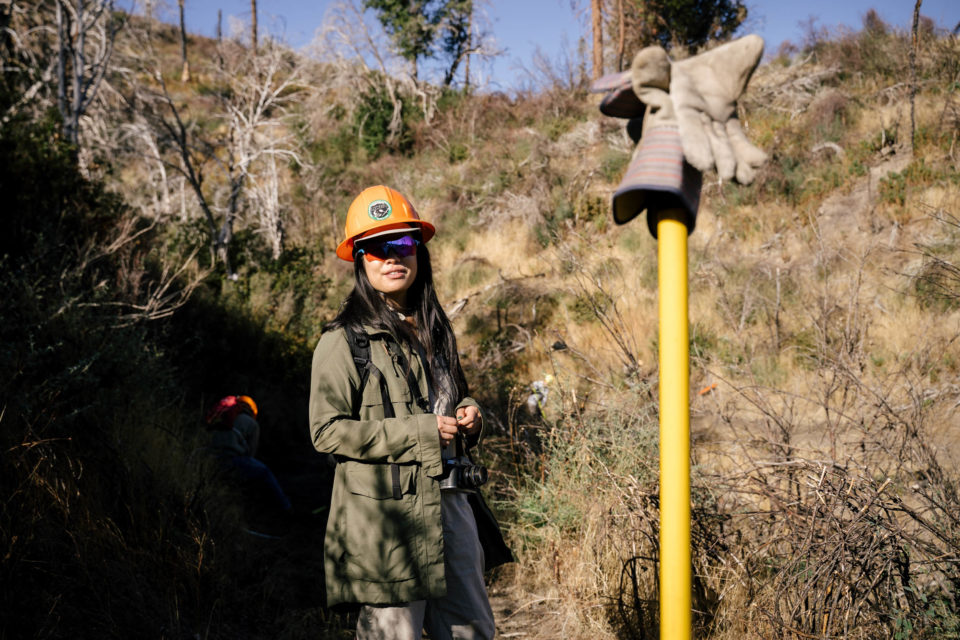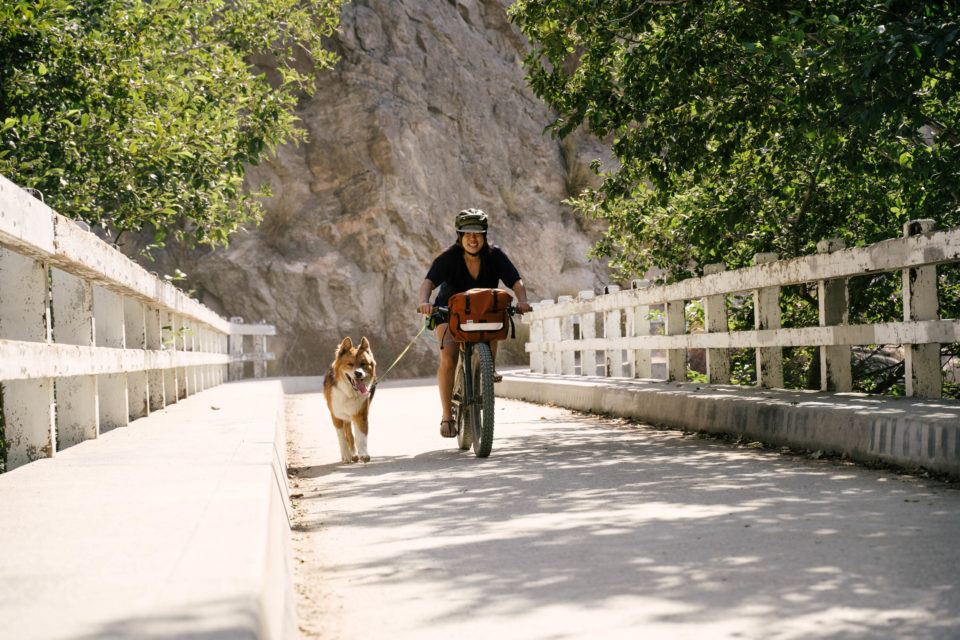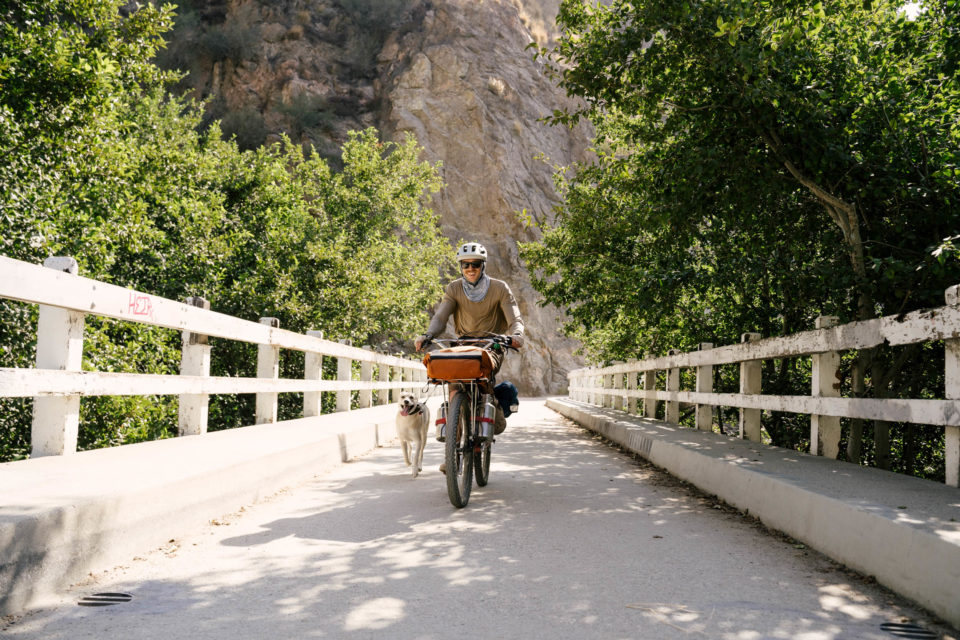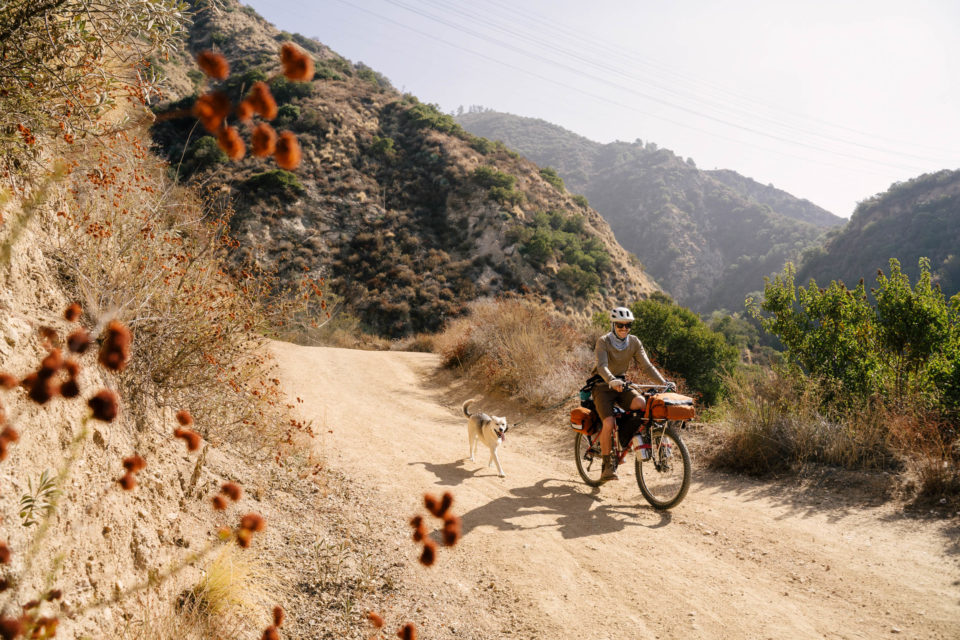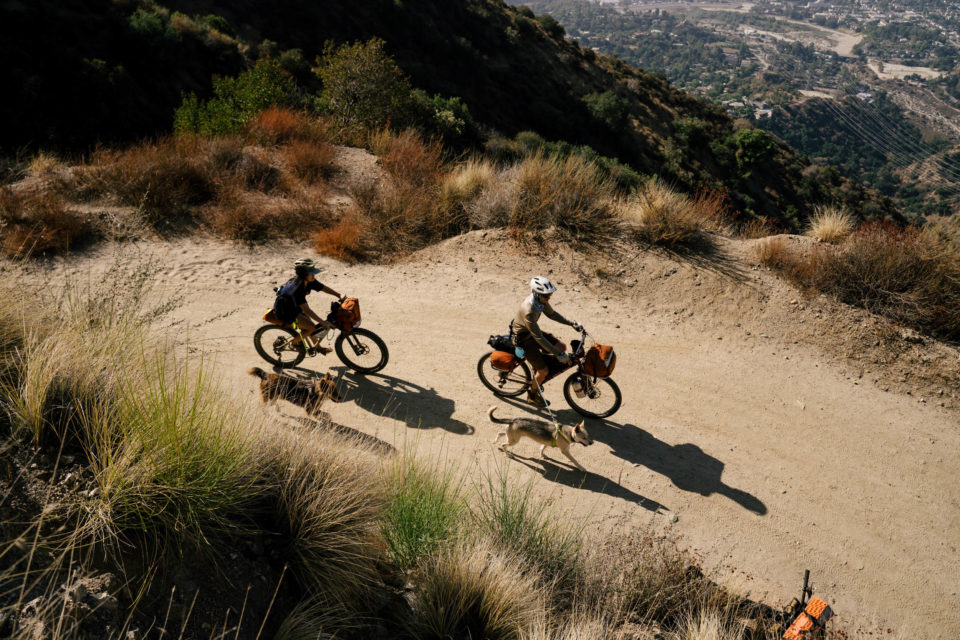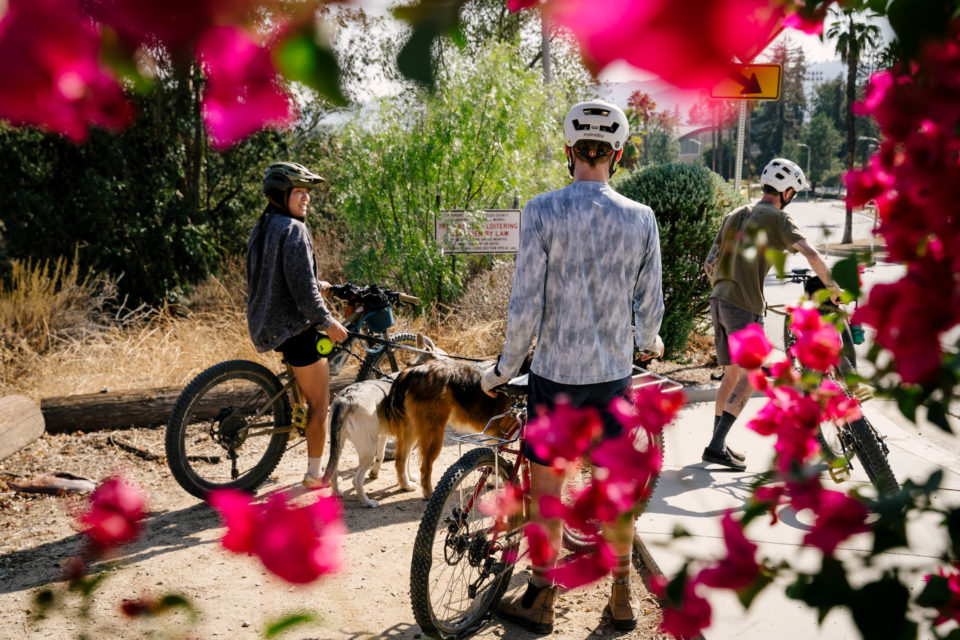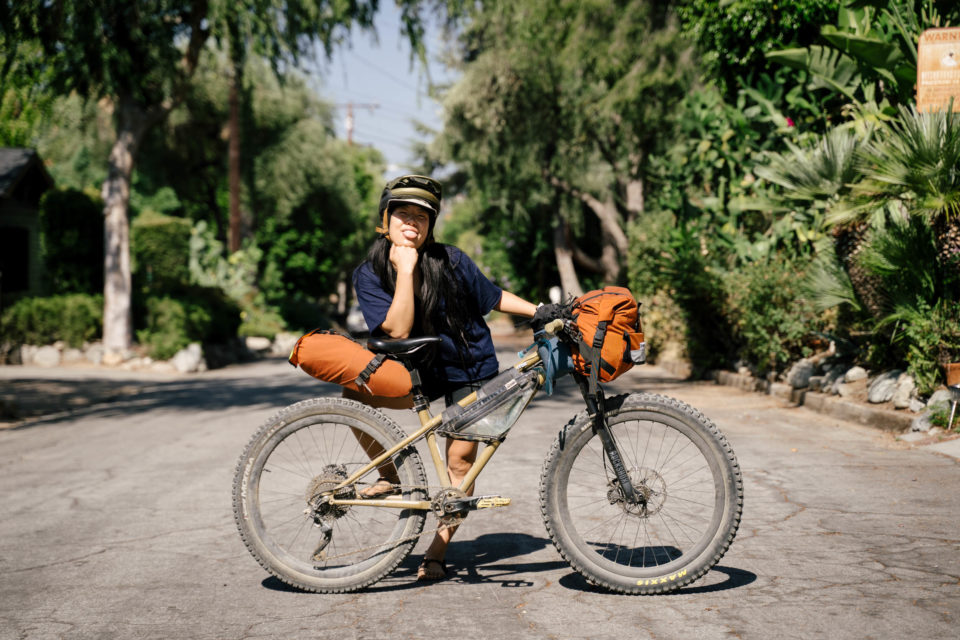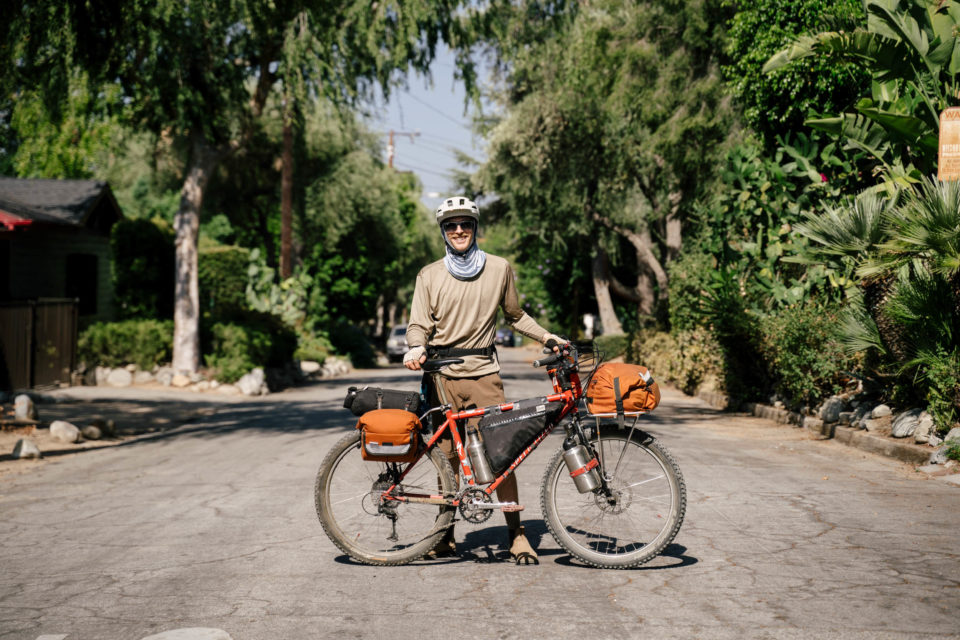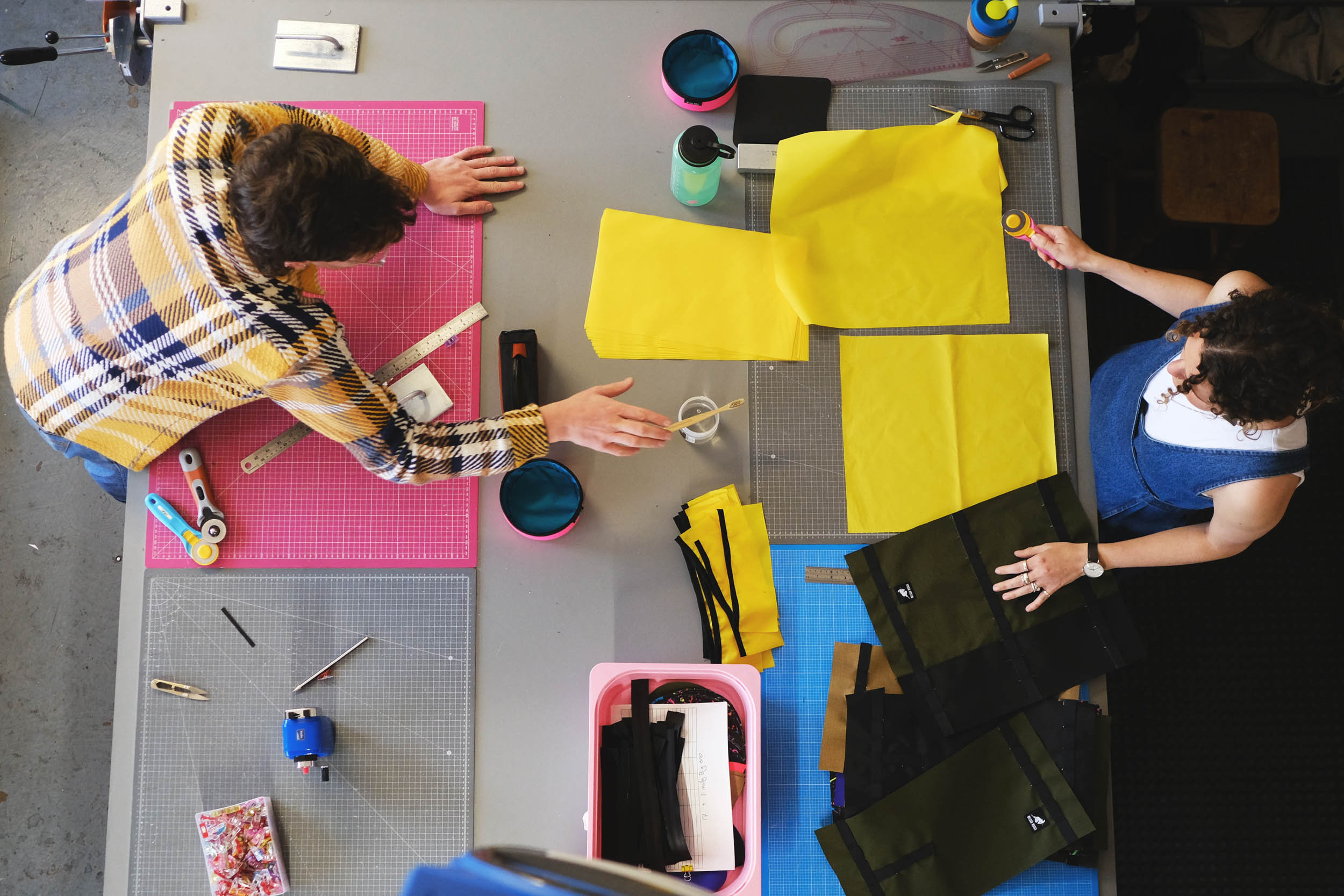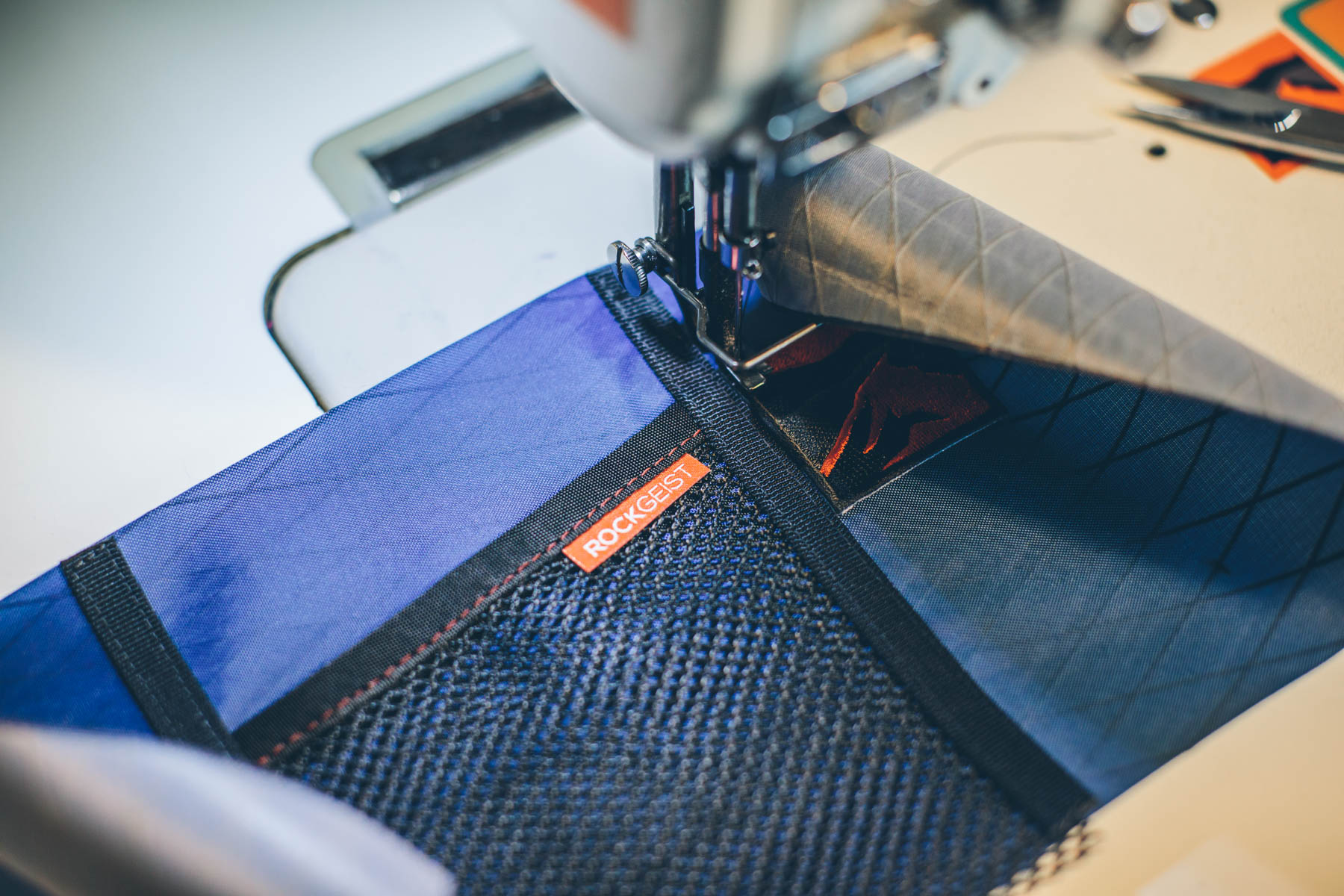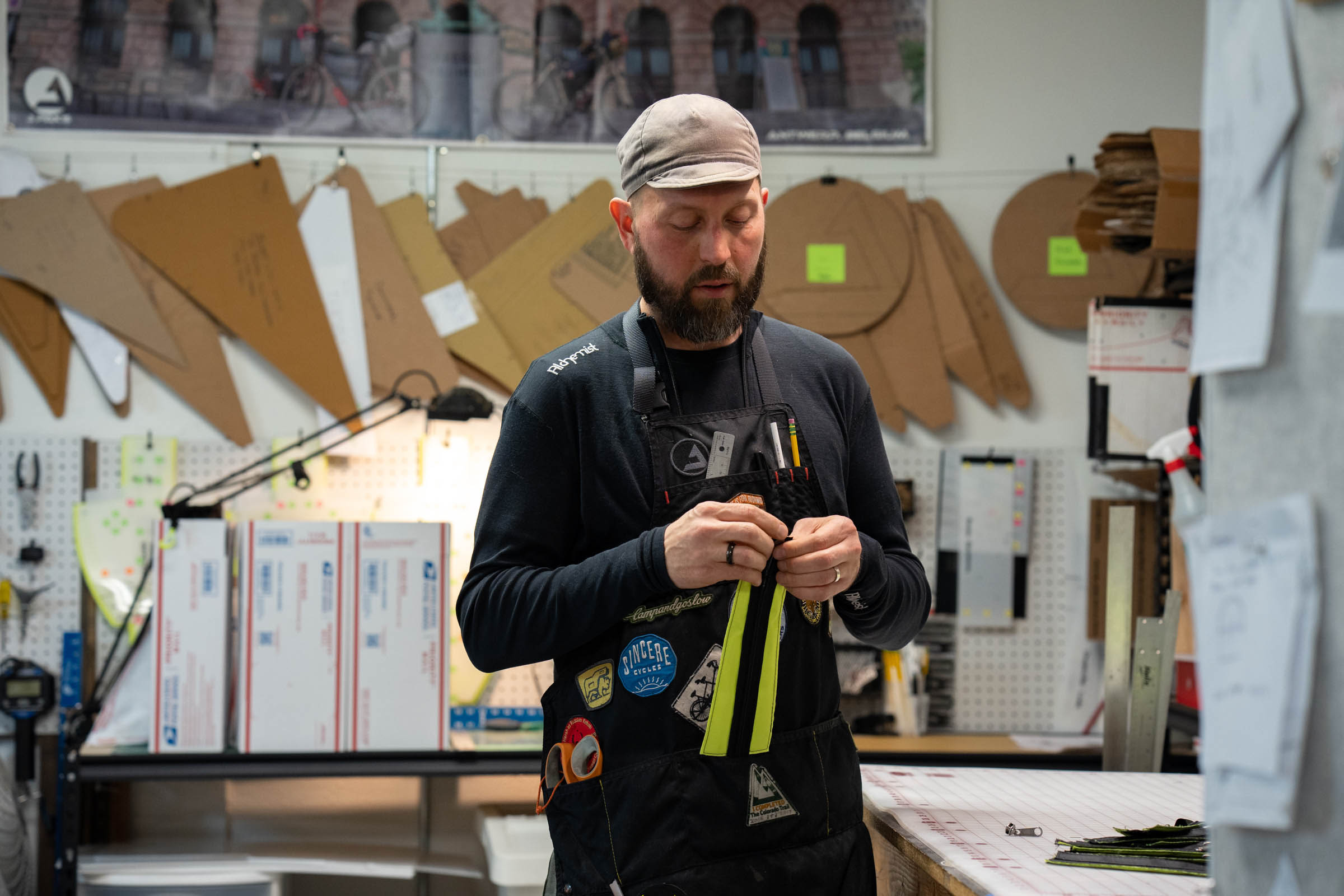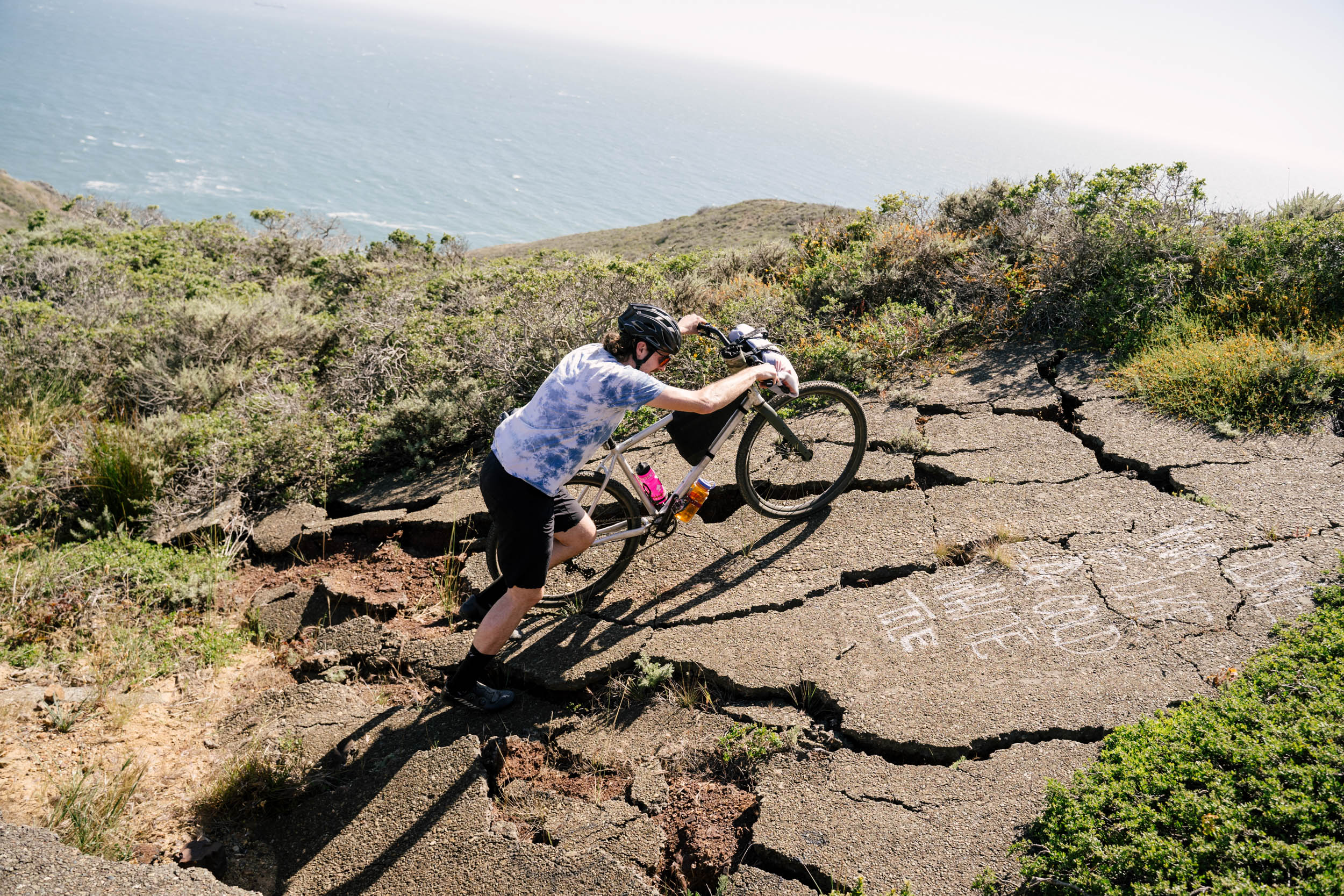Anything and Everything: A Deep Dive into Road Runner Bags
We sent photographer Evan Christenson to check out Road Runner Bags in Los Angeles, and his workshop visit turned into a four-day adventure with co-owners Brad and Ester. Find a look inside Road Runner HQ, photos from rides around LA, and so much more in this behind-the-scenes look at the handmade bag brand and the people behind it here…
PUBLISHED Sep 28, 2022
Squeezed in between the grand opulence of a gentrifying downtown and the ever-growing crisis in Skid Row lies the elbows out, crack in the rearview mirror, human or dog shit?? in the alleyway, and high heels in the dumpster Fashion District of Downtown Los Angeles. And amid the rows of tailors, sewing machine repair shops, fast fashion warehouses, textile outlets, and the few remaining manufacturing plants is the small and quirky, but still very serious group of craftspeople at Road Runner Bags. This project, born out of a long bike commute and an older brother’s spare bedroom, has taken on a few different shapes in the 12 years since its inception, but all of those shapes are cut from Cordura and bar tacked and taped with incredible scrutiny. And all of them I really like.
Road Runner’s founder Brad briefly went to school to study fashion, and he’s adamant that his teenage years in rural Cullman, Alabama, made him resourceful, curious, and an outcast finding his place with the others. “Down in the South, we only had vinyl and high-waisted pants. We do everything cool 10 years before it’s cool [in LA].” But as he bounced around from a small liberal arts school in Alabama to Fullerton College in LA, making and tinkering kept him baseline distracted.
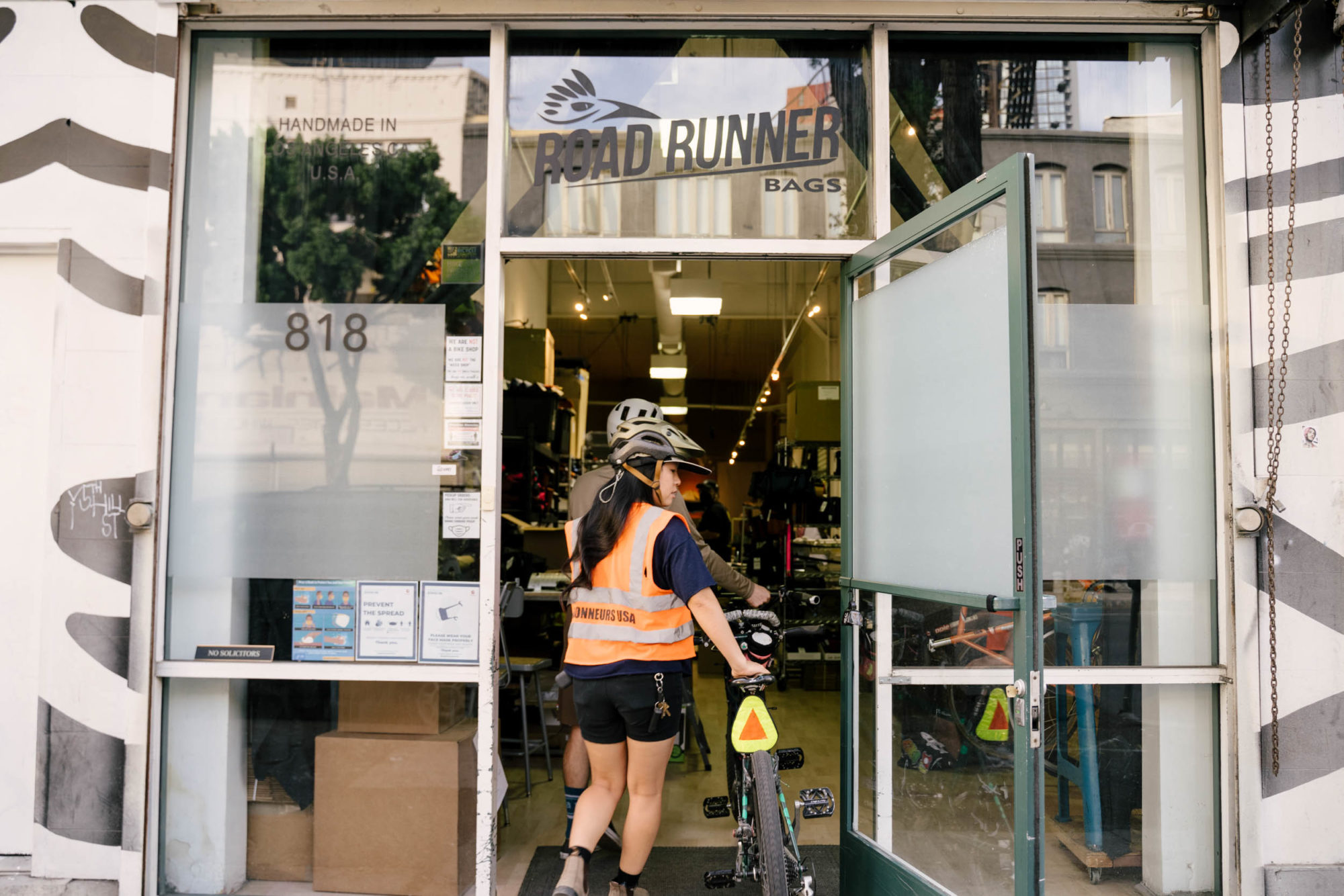
He started making bags while living in his older brother’s spare bedroom, beginning with a simple hip pack, tons of stitches, heavy Cordura, and a vinyl liner, solving a fundamental cargo-carrying problem and teaching himself how to sew in the process. He started selling them on Etsy, dropped out of school within a year to focus on the project, and lost the name Brad’s Bags really quickly. “I grew up in the desert in Apple Valley, and my grandma always loved roadrunners. When I told her what I was doing, she just said, Call it Road Runner!”
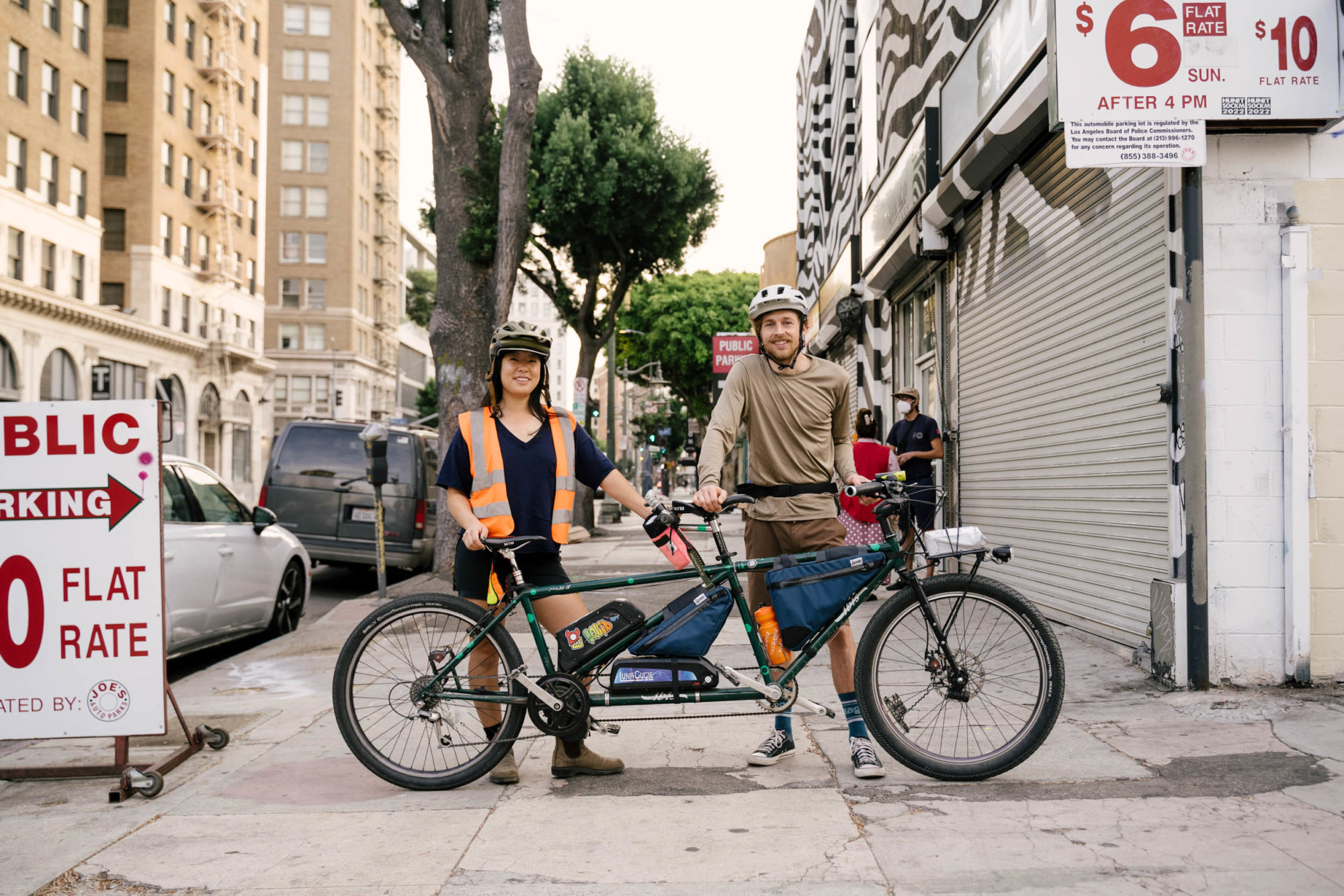
And from there, like all of these garage stories with happy endings, it grew out of a decade or so of hard work, several big setbacks, and just the right amount of luck. Brad had slowly worked his way out of his brother’s spare room when he got a call from an old friend. Ester, the old friend from college days back in Alabama, was coming into town for a wedding and was wondering if he could pick her up at the airport. Brad picked up three rolls of Cordura from the port on the way over, brought her to the studio, and convinced her to join the team that winter. They hit it off immediately. There are a lot of giggles when they tell this part of the story, and it ends a few years later with Ester cutting a shifter cable, coiling it into an improvised ring, and getting down on one knee a spring Sunday morning in the kitchen. Now, they share the company, along with a dozen other full-time projects.
While Brad was orbiting the country from Scottsdale to Alabama to New York to Vancouver and back to SoCal, Ester had her feet on the ground and her nose to the grindstone. Ester’s father immigrated to the States when he was 21, some 20 years after the Korean War, and followed many people in his community to the hotbed of Korean culture: Huntsville, Alabama. He had an arranged marriage, meeting Ester’s eventual mother on the morning of their wedding day, and settled into the blue-collar American immigrant dream with a loan from the bank and an old gas station to operate. They lured in their Southern clientele with fried gizzards and spring rolls, and Ester and her brother grew up in the back room, quickly leaving the crib to pack Budweiser cans in six-pack rings by the age of five. She started young.
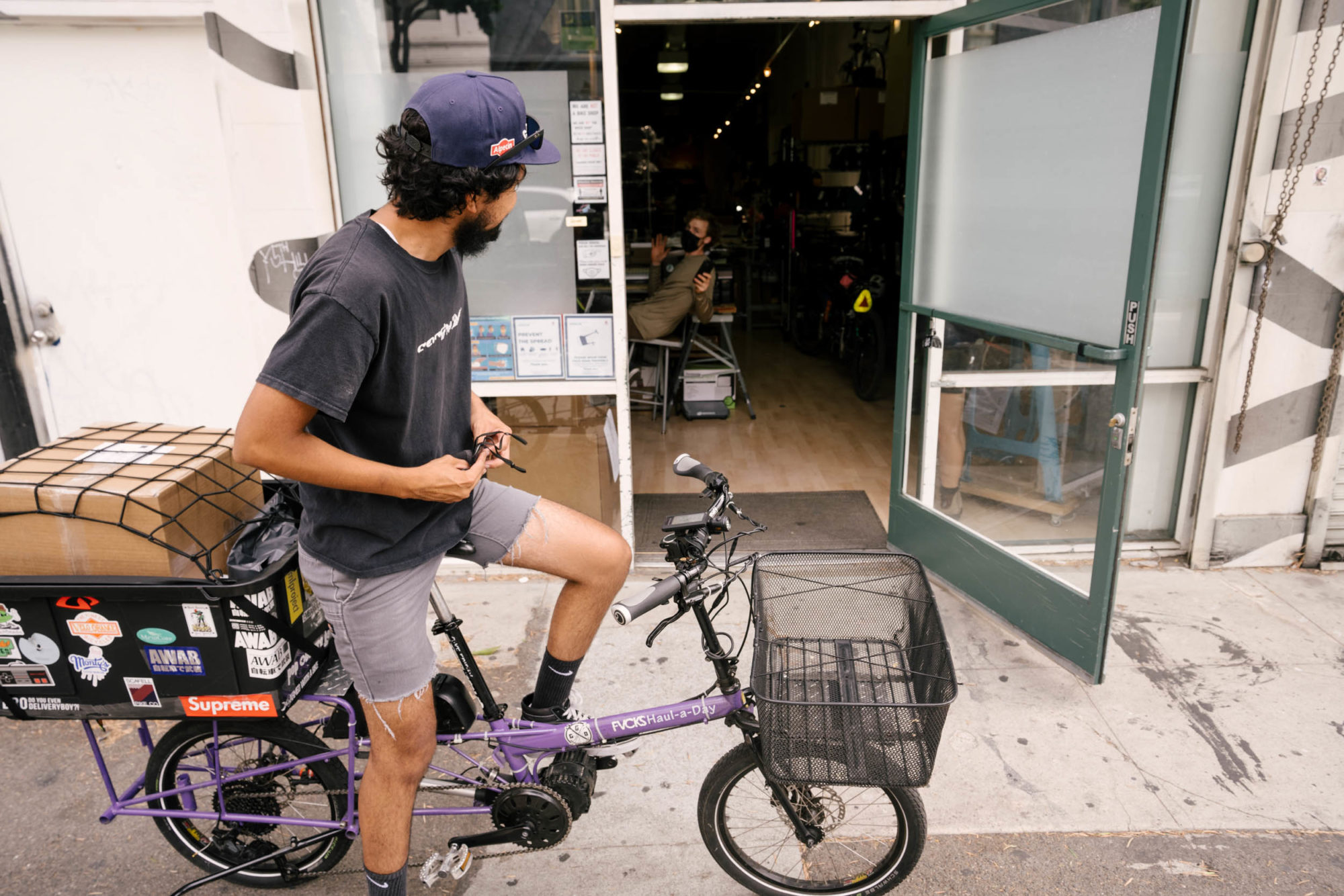
And Ester stayed on the gas, eventually graduating from The University of Alabama at Birmingham (Go Blazers!) receiving a BA with an emphasis in photography. She moved to New York City, where the big-shot photo agents wouldn’t take her Southern accent and education seriously. She worked a day job at a rental studio for photo shoots, renting out props like rocks, plants, and cutting boards out to clients. In the evening, she was a technician at a ceramics studio. In the winter, she worked for a Korean family in the Bronx, sewing the NYPD’s winter hats, up to 500 a day and 30,000 a season.
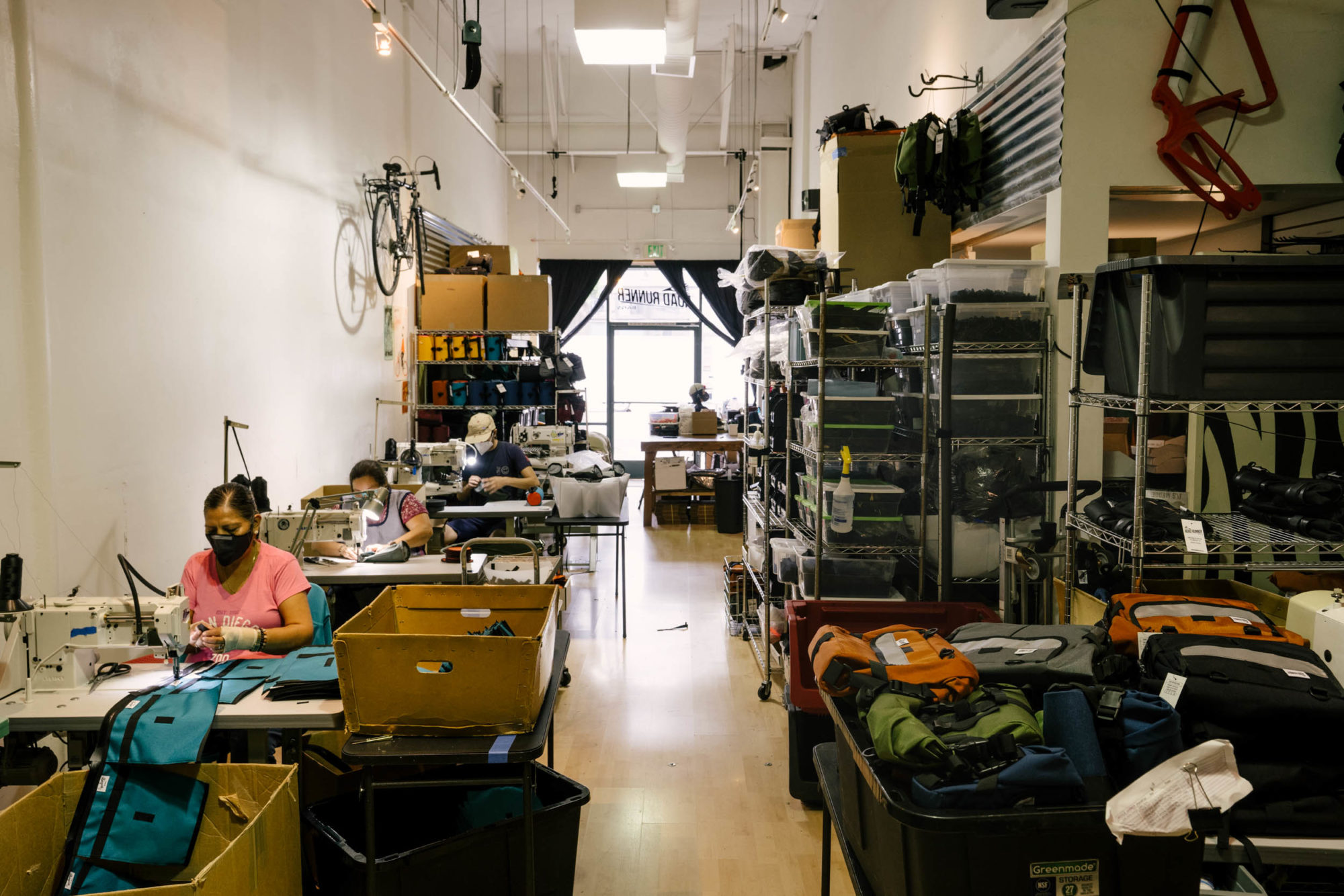
So, when Ester arrived in the City of Angels to work with Road Runner, she brought several areas of expertise. That was 2015. Brad had reached a sort of plateau with the company, now working in a downtown warehouse, peaking at a different set of five employees. Ester started from the bottom and restructured the whole process. They got more efficient, more accurate, more detail-oriented. They brought on more sewers and prototyped new bags. They had a tough few years in a warehouse in Skid Row, working through police sirens, overlooking the lovingly dubbed “crack alley,” and splitting a small space three ways: a living space, the production space, and with the neighbor, a struggling artist on heroin. Brad and Ester buckled down on the web store and set out to make their manufacturing company into a brand. Cue the montage and drop the lights. Ester was the Wile E. Coyote, and the Road Runner took flight.
Today the shop is methodical, compact, highly organized, and very focused on churning out bags. The pandemic boom ate up the storefront, and the 1,800-square-foot building—one long rectangle, humming and buzzing throughout the morning work hours—is crammed with people and stuffed with raw material. Stacks of Cordura and vinyl line the shelves in the back. A big CNC cutter cuts the pieces that are separated and then transferred through an assembly line of highly skilled craftspeople. The sewing machines whir and puke out rows of bags into boxes, ready to go to the next person. Juan, now seven years with the company, jokes that sometimes he’ll get the machine to smoke because he sews so fast. Frank Sinatra plays in the background, some people wear earbuds, a dog stretches in the corner. The shop is clean and linear, labeled and orderly. There are small jokes to be found lining the shelves on sticky notes, but don’t be fooled: this place means business.
Brad looks around. “There’s just not many places left in America where people know how to make something. I think that’s a shame,” he says. We now, as Americans, make two percent of the clothing that we buy in the United States. The trade has been shipped overseas, leaving the streets of the Fashion District a hectic shell of what once boomed. But there is value in this place still. When they needed more sewers, they left a note on the window in English and Spanish and quickly hired Emma, Rosa, and Candelaria, three Guatemalan women with decades of sewing experience between them. The raw materials come from a warehouse a short drive down the road. The resources still exist in this neighborhood. It’s just the rest of the businesses that don’t.
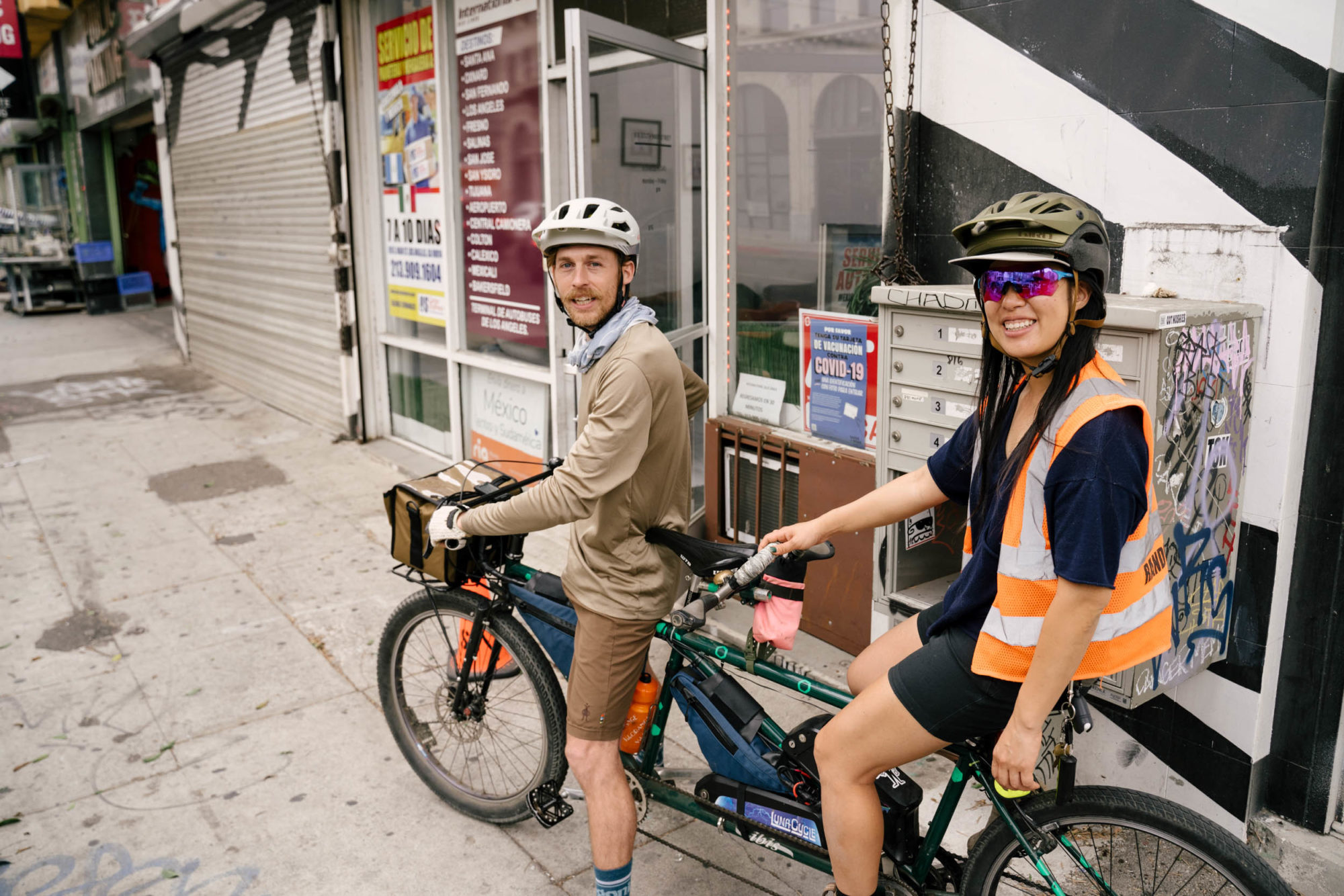
Los Angeles, specifically Downtown LA, is not the first place I would choose to start a bike bag company. Los Angeles has had a few rough years lately, several wildfires, an ever-growing housing crisis, and all the pollution, traffic, and noise. Where do you even go bikepacking? Ester and Brad invited me over for a weekend to see the city they love so dearly. And in the process they got me to better understand it. Los Angeles is too big to be defined by cliches. “You can do anything you want in Los Angeles, and I mean anything,” says Brad. And anything is what they chose to do.
Alta Dena, Abajo Cielo
In a small nook of the Verdugo Mountains, gently cupped by the great hands of the San Gabriels and flanked by the Angeles National Forest—yet still surrounded by city and open for business—is the small unincorporated town of Altadena. Brad and Ester have made their own small oasis from the chaos in the foothills, and it’s finally given the couple the space they need to let their tinkering minds go free. They educate me on the merits of different air conditioning systems, and which one is preferred for which climate. Do you know much about roofing techniques?
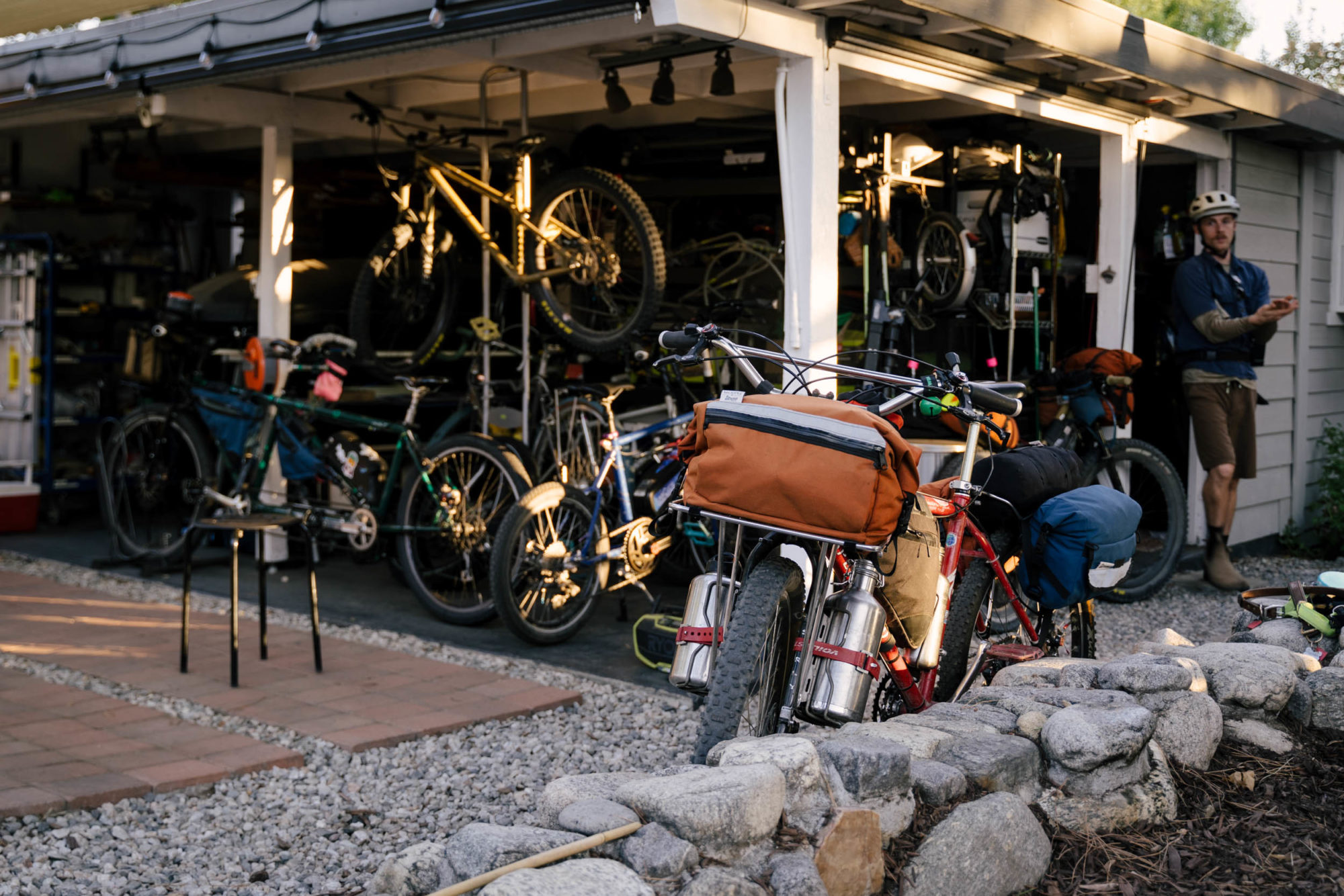
Brad looks over my bike and lunges at his tools. Ester collects chicken eggs. We sit in the shade under great oak trees and talk as the afternoon light, diffused by the city’s haze and bent by skyscrapers, glistens off Mt. Lowe, their great neighbor peering over the fence. They use all the space here, and use it communally. A friend in the guest house, Brad’s mom in the small cottage to the side, his brother in the basement. People are in and out, sharing stories, staying up to date. It’s nice.
We go for an overnighter into the Angeles National Forest, a short ride from their driveway, and a much longer climb up to the first bench we can camp comfortably at. We push through chaparral in the dark and stumble into a full-blown party, 30 people, plenty of drinks and food, the chit-chat hum of a good time and the crickets singing along. We sit high above the city and appreciate a night camped out not below the stars but above them for a change. There’s a gentle sea of commotion to fall asleep to while watching out of the side of my hammock. And there’s a second reassurance waking up and watching the traffic, knowing that we’re taking the back way home.
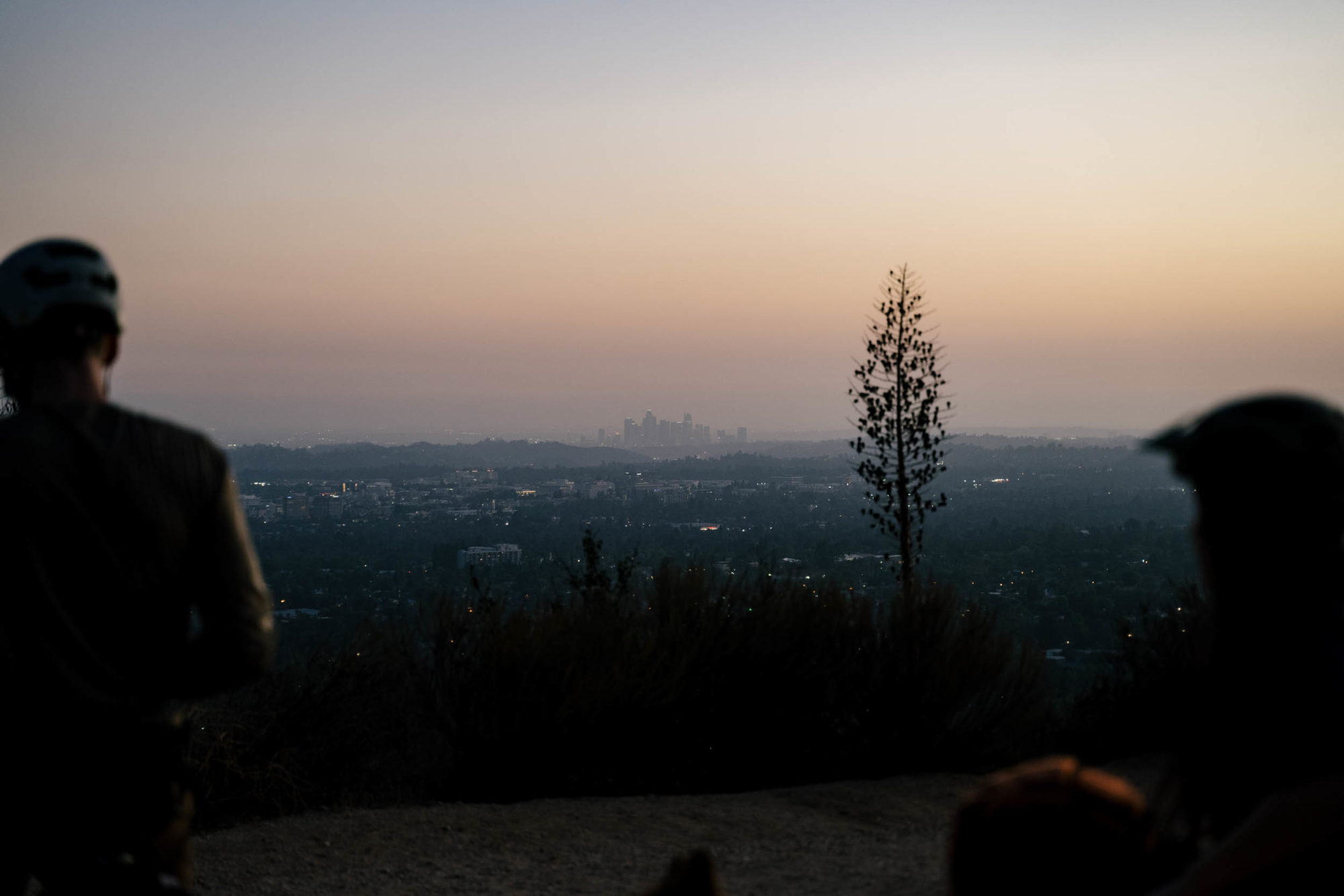
Back home the following night, we ride into the city and meet up with a friend for a ride on his new bike after his last one was stolen a few weeks ago. He runs an art gallery, apparently a pretty popular one. He talks about heavy metal parties under freeway overpasses, and we drink Asahi on the new 6th St. Bridge. Bill says the night they opened the bridge, the party was so crazy the riot police came out. They lit fires and did donuts and had mosh pits to celebrate a new place to cruise. Now, it’s full of people talking and rollerblading, and we meet a person from Australia who’s been flown in to shuffle cards for a commercial. They do it professionally, showing us flashy moves on glittering cards with long fingers. They’ve done it for years, all to randomize a deck. Brad reiterates as we ride away and into the night, “You can do anything in LA…”
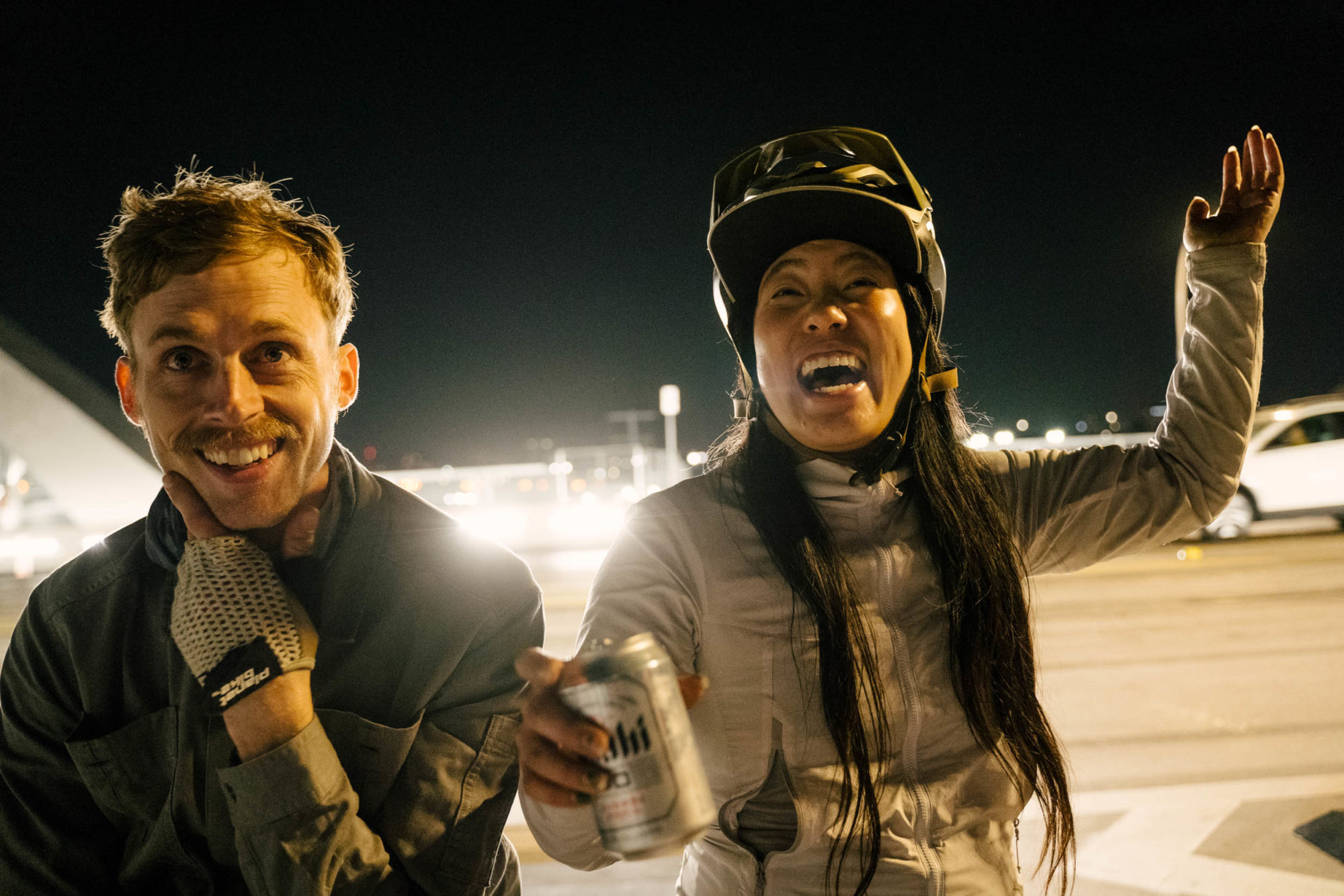
Saturday is a day ride into the mountains, a quick loop on their favorite and surprisingly fun trails with an old friend who’s in town for the weekend. Brad flats, and he runs home, and we spend the rest of the day talking and helping his mom move in her new bed.
Sunday, Ester and I go up into the mountains. Angeles Crest, big and grand, the halo atop the City of Angels. Ester is the VP of the Mount Wilson Bicycle Association, and once a month she goes up for a trail day. We dig for a rewarding five hours, clearing poisonous shrubbery that has flared up since the 2009 Station Fire and the more recent 2020 Bobcat Fire that scorched the area. We work fast and clear a gentle connecting trail and bench cut it in the process. We eat burritos and talk about life around the table later.
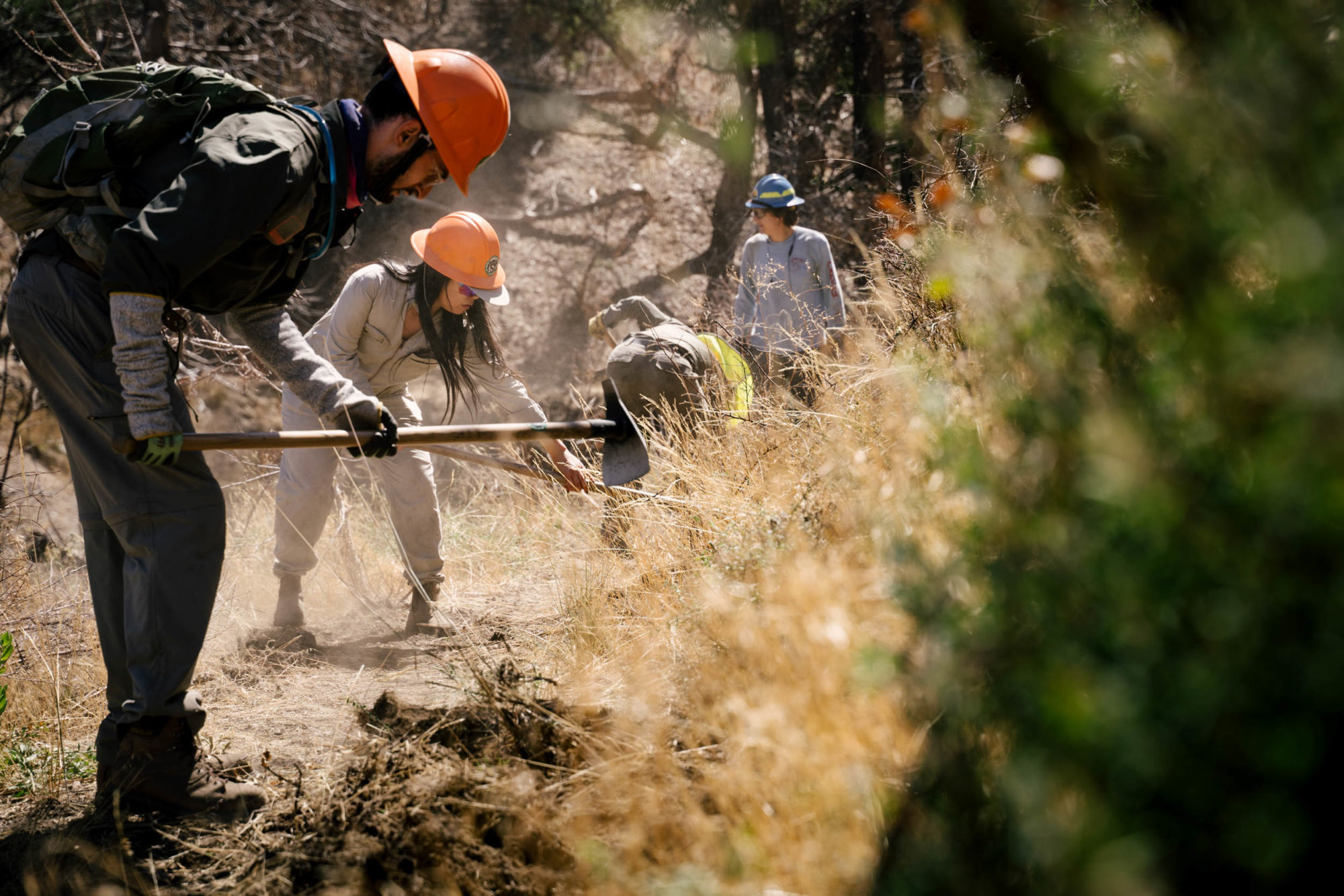
This weekend, a standard one for Ester and Brad, was centered around and devoted to that magical word: community. Ester works on the board of the safe streets committee too, improving local infrastructure and making it a more overall friendly place. She rides on the back of the tandem and waves at drivers. She talks with the neighbors; when she gets out of the car on trail day everyone yells, “Ester!” That weekly Thursday night party on the mountain is a direct finger on the pulse of the community and its headspace: who’s riding, who’s not, how are you?
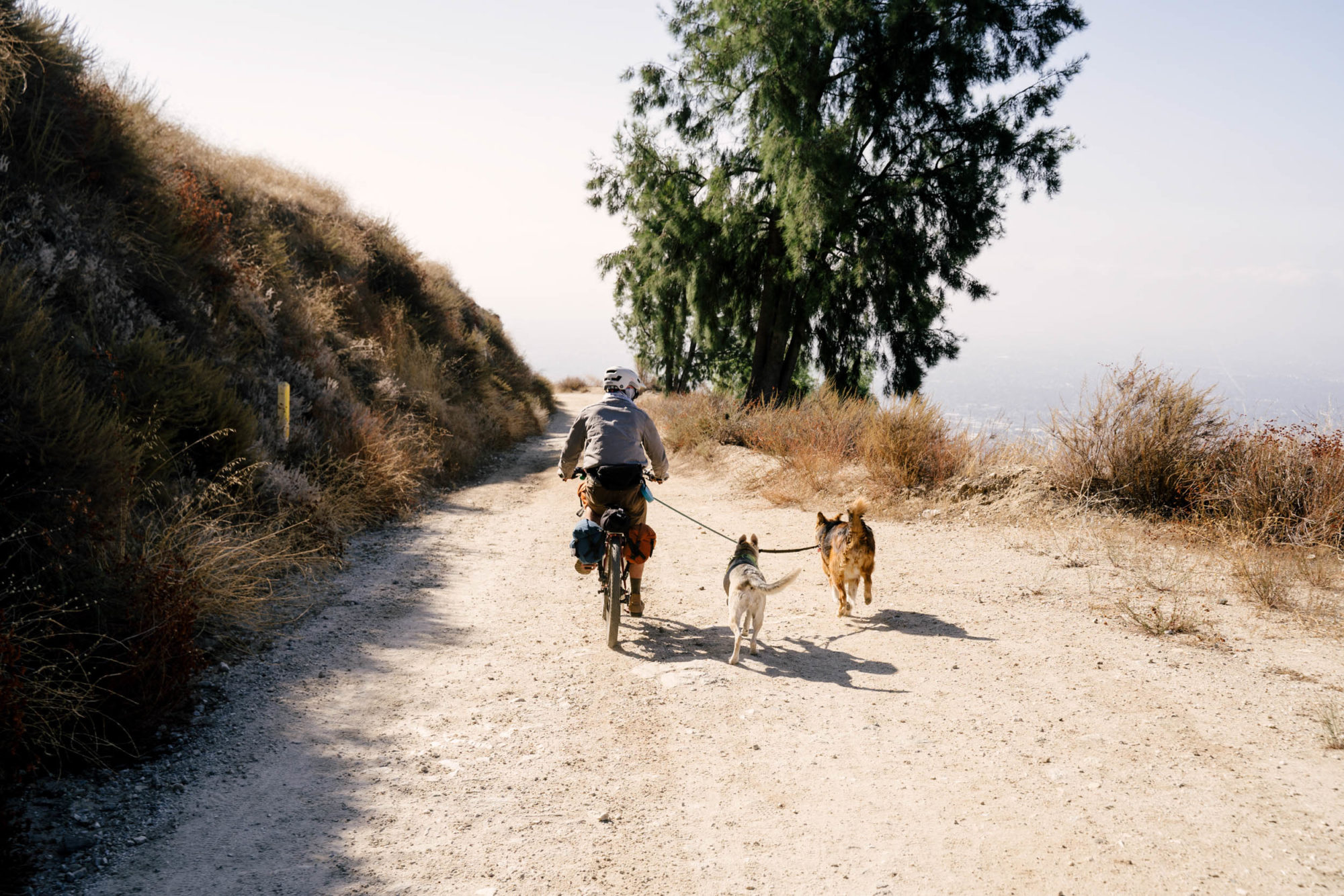
Road Runner doesn’t sponsor athletes or influencers or have big marketing programs selling an image of something they aren’t. Instead, they give bags to local non-profits, cycling clubs for the fringe riders, and of course to the trail building groups. The company rides out to Slab City every winter as a group. Friends drop by the shop and into their gates for a quick snap. Community is a hard thing to foster. It takes time and resources away from the bottom line. But community building is like a hug of forgiveness from that great big scary world. It just feels right.
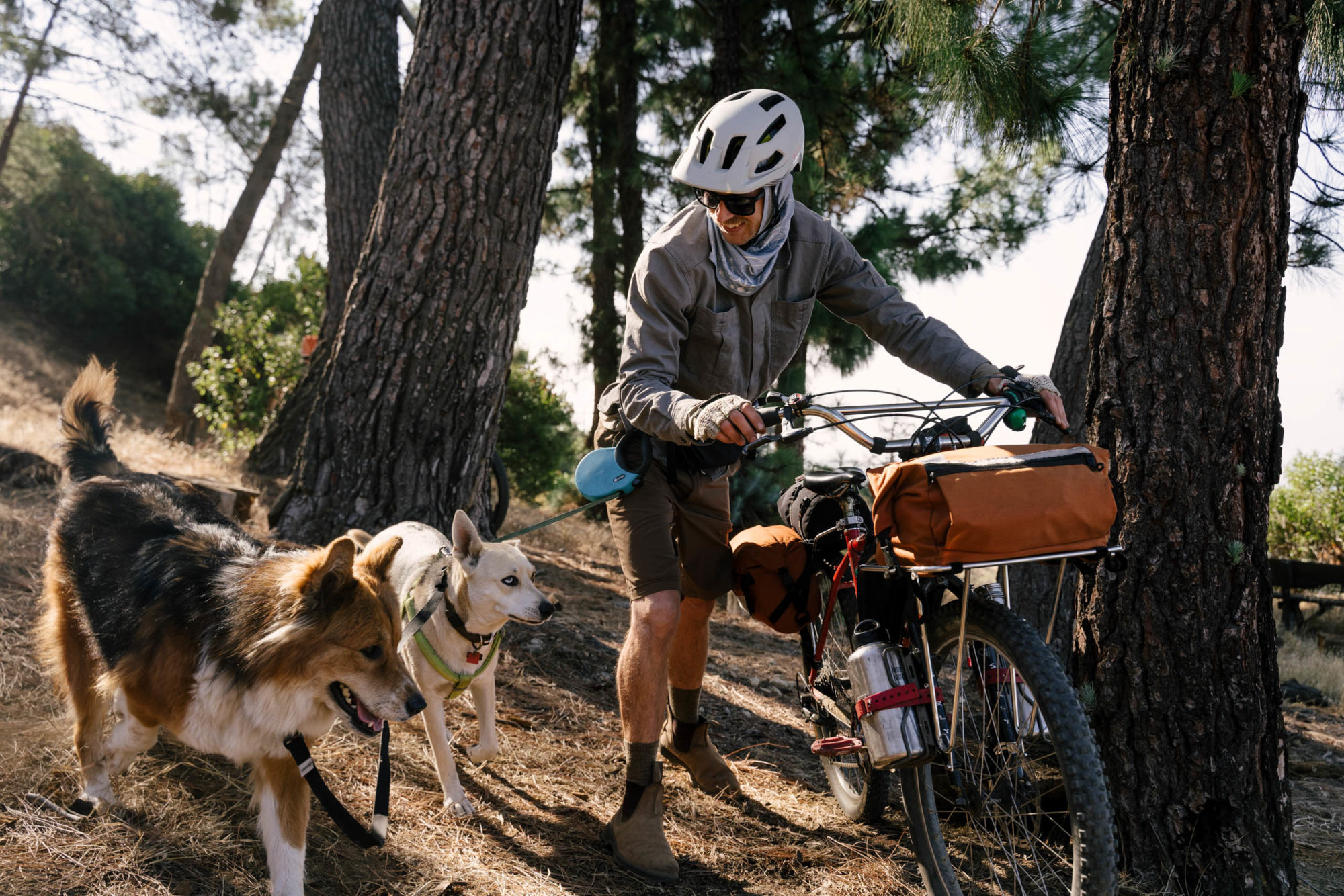
The gentrified mess that is Downtown Los Angeles is not a place I headed for feeling excited about the riding. It’s the reason #LAsucksforcycling has gotten so popular in town. The outsider dismisses LA as too chaotic and busy, but once you find those quiet back streets and cutty trails off the mountains, it becomes a magic underworld of excitement and possibility. And you can do whatever you want in LA, whether you’re a professional roadie or an urban fixie bike messenger or a dirtbag rolling overnighters into the desert. You can be a professional card shuffler, a bike bag manufacturer, or an art curator. Maybe even all three.
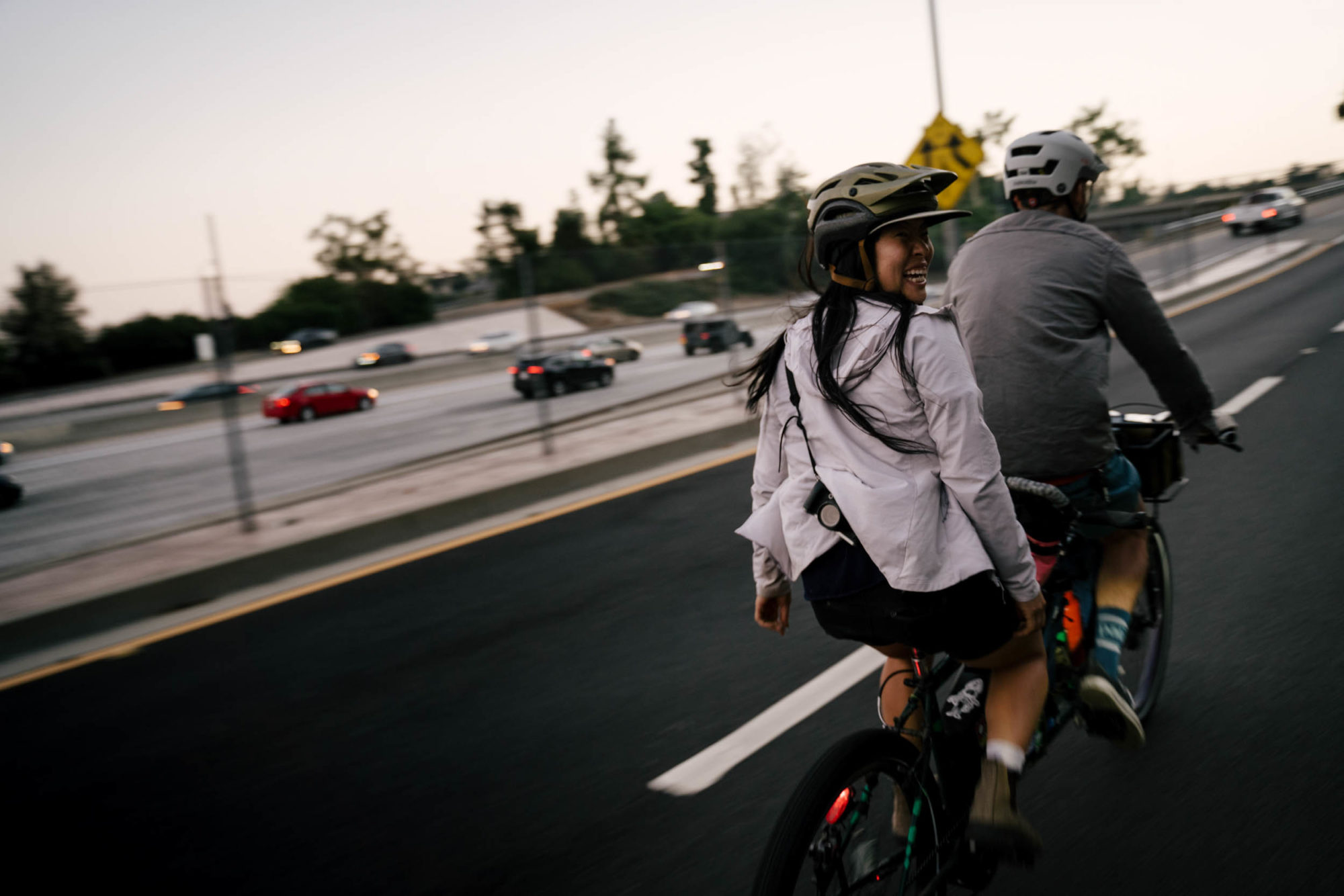
Los Angeles has had a tough few years, and it’s taken a beating both physically and emotionally. Brad and Ester have had more than a life’s worth of action living in the city, running an 11-person business, getting them all retirement plans, dealing with neighbors and family drama, the two long stays in the hospital, the one that took Brad out of racing and the one that made them transfer ownership of the company. They’ve been focused on staying afloat, keeping their employees happy, and trying not to get bucked from the COVID wave. And their bags reflect the world they’re immersed in: rugged and ready for anything, built as much for busy streets as they are comfortable in the mountains. They’re made with the colors of the singed pine trees dotting the San Gabriels they draw inspiration from. And although Los Angeles has had some hard years, it will always be a world of possibilities. It will always be grand, beautiful, and tough. It will always be the City of Angels. And it will always be in the Road Runner Bags DNA.
Related Content
Make sure to dig into these related articles for more info...
Please keep the conversation civil, constructive, and inclusive, or your comment will be removed.







